The Jewish Role in the Bolshevik Revolution and Russia's Early Soviet Regime
In the night of July 16-17, 1918, a squad of Bolshevik secret police murdered Russia's last emperor, Tsar Nicholas II, along with his wife, Tsaritsa Alexandra, their 14-year-old son, Tsarevich Alexis, and their four daughters.
They were cut down in a hail of gunfire in a half-cellar room of the house in Ekaterinburg, a city in the Ural mountain region, where they were being held prisoner. The daughters were finished off with bayonets. To prevent a cult for the dead Tsar, the bodies were carted away to the countryside and hastily buried in a secret grave.
Bolshevik authorities at first reported that the Romanov emperor had been shot after the discovery of a plot to liberate him. For some time the deaths of the Empress and the children were kept secret. Soviet historians claimed for many years that local Bolsheviks had acted on their own in carrying out the killings, and that Lenin, founder of the Soviet state, had nothing to do with the crime.
In 1990, Moscow playwright and historian Edvard Radzinsky announced the result of his detailed investigation into the murders. He unearthed the reminiscences of Lenin's bodyguard, Alexei Akimov, who recounted how he personally delivered Lenin's execution order to the telegraph office. The telegram was also signed by Soviet government chief Yakov Sverdlov. Akimov had saved the original telegraph tape as a record of the secret order.1
Radzinsky's research confirmed what earlier evidence had already indicated. Leon Trotsky -- one of Lenin's closest colleagues -- had revealed years earlier that Lenin and Sverdlov had together made the decision to put the Tsar and his family to death.
Recalling a conversation in 1918, Trotsky wrote: 2
Recalling a conversation in 1918, Trotsky wrote: 2
My next visit to Moscow took place after the [temporary] fall of Ekaterinburg [to anti-Communist forces]. Speaking with Sverdlov, I asked in passing: "Oh yes, and where is the Tsar?""Finished," he replied. "He has been shot.""And where is the family?""The family along with him.""All of them?," I asked, apparently with a trace of surprise."All of them," replied Sverdlov. "What about it?" He was waiting to see my reaction. I made no reply."And who made the decision?," I asked."We decided it here. Ilyich [Lenin] believed that we shouldn't leave the Whites a live banner to rally around, especially under the present difficult circumstances."I asked no further questions and considered the matter closed.
Recent research and investigation by Radzinsky and others also corroborates the account provided years earlier by Robert Wilton, correspondent of the London Times in Russia for 17 years. His account, The Last Days of the Romanovs - originally published in 1920, and reissued in 1993 by the Institute for Historical Review -- is based in large part on the findings of a detailed investigation carried out in 1919 by Nikolai Sokolov under the authority of "White" (anti-Communist) leader Alexander Kolchak. Wilton's book remains one of the most accurate and complete accounts of the murder of Russia's imperial family.3
A solid understanding of history has long been the best guide to comprehending the present and anticipating the future. Accordingly, people are most interested in historical questions during times of crisis, when the future seems most uncertain. With the collapse of Communist rule in the Soviet Union, 1989-1991, and as Russians struggle to build a new order on the ruins of the old, historical issues have become very topical. For example, many ask: How did the Bolsheviks, a small movement guided by the teachings of German-Jewish social philosopher Karl Marx, succeed in taking control of Russia and imposing a cruel and despotic regime on its people?
In recent years, Jews around the world have been voicing anxious concern over the specter of anti-Semitism in the lands of the former Soviet Union. In this new and uncertain era, we are told, suppressed feelings of hatred and rage against Jews are once again being expressed. According to one public opinion survey conducted in 1991, for example, most Russians wanted all Jews to leave the country.4 But precisely why is anti-Jewish sentiment so widespread among the peoples of the former Soviet Union? Why do so many Russians, Ukrainians, Lithuanians and others blame "the Jews" for so much misfortune?
A Taboo Subject
Although officially Jews have never made up more than five percent of the country's total population,5 they played a highly disproportionate and probably decisive role in the infant Bolshevik regime, effectively dominating the Soviet government during its early years. Soviet historians, along with most of their colleagues in the West, for decades preferred to ignore this subject. The facts, though, cannot be denied.
With the notable exception of Lenin (Vladimir Ulyanov), most of the leading Communists who took control of Russia in 1917-20 were Jews. Leon Trotsky (Lev Bronstein) headed the Red Army and, for a time, was chief of Soviet foreign affairs. Yakov Sverdlov (Solomon) was both the Bolshevik party's executive secretary and -- as chairman of the Central Executive Committee -- head of the Soviet government. Grigori Zinoviev (Radomyslsky) headed the Communist International (Comintern), the central agency for spreading revolution in foreign countries. Other prominent Jews included press commissar Karl Radek (Sobelsohn), foreign affairs commissar Maxim Litvinov (Wallach), Lev Kamenev (Rosenfeld) and Moisei Uritsky.6
Lenin himself was of mostly Russian and Kalmuck ancestry, but he was also one-quarter Jewish. His maternal grandfather, Israel (Alexander) Blank, was a Ukrainian Jew who was later baptized into the Russian Orthodox Church.7
A thorough-going internationalist, Lenin viewed ethnic or cultural loyalties with contempt. He had little regard for his own countrymen. "An intelligent Russian," he once remarked, "is almost always a Jew or someone with Jewish blood in his veins."8
Critical Meetings
In the Communist seizure of power in Russia, the Jewish role was probably critical.
Two weeks prior to the Bolshevik "October Revolution" of 1917, Lenin convened a top secret meeting in St. Petersburg (Petrograd) at which the key leaders of the Bolshevik party's Central Committee made the fateful decision to seize power in a violent takeover.
Of the twelve persons who took part in this decisive gathering, there were four Russians (including Lenin), one Georgian (Stalin), one Pole (Dzerzhinsky), and six Jews.9
Of the twelve persons who took part in this decisive gathering, there were four Russians (including Lenin), one Georgian (Stalin), one Pole (Dzerzhinsky), and six Jews.9
To direct the takeover, a seven-man "Political Bureau" was chosen.
It consisted of two Russians (Lenin and Bubnov), one Georgian (Stalin), and four Jews (Trotsky, Sokolnikov, Zinoviev, and Kamenev).10
Meanwhile, the Petersburg (Petrograd) Soviet -- whose chairman was Trotsky -- established an 18-member "Military Revolutionary Committee" to actually carry out the seizure of power. It included eight (or nine) Russians, one Ukrainian, one Pole, one Caucasian, and six Jews.11 Finally, to supervise the organization of the uprising, the Bolshevik Central Committee established a five-man "Revolutionary Military Center" as the Party's operations command. It consisted of one Russian (Bubnov), one Georgian (Stalin), one Pole (Dzerzhinsky), and two Jews (Sverdlov and Uritsky).12
Contemporary Voices of Warning
Well-informed observers, both inside and outside of Russia, took note at the time of the crucial Jewish role in Bolshevism. Winston Churchill, for one, warned in an article published in the February 8, 1920, issue of the London Illustrated Sunday Herald that Bolshevism is a "worldwide conspiracy for the overthrow of civilization and for the reconstitution of society on the basis of arrested development, of envious malevolence, and impossible equality."
The eminent British political leader and historian went on to write:13
The eminent British political leader and historian went on to write:13
There is no need to exaggerate the part played in the creation of Bolshevism and in the actual bringing about of the Russian Revolution by these international and for the most part atheistical Jews. It is certainly a very great one; it probably outweighs all others. With the notable exception of Lenin, the majority of the leading figures are Jews. Moreover, the principal inspiration and driving power comes from the Jewish leaders. Thus Tchitcherin, a pure Russian, is eclipsed by his nominal subordinate, Litvinoff, and the influence of Russians like Bukharin or Lunacharski cannot be compared with the power of Trotsky, or of Zinovieff, the Dictator of the Red Citadel (Petrograd), or of Krassin or Radek -- all Jews. In the Soviet institutions the predominance of Jews is even more astonishing. And the prominent, if not indeed the principal, part in the system of terrorism applied by the Extraordinary Commissions for Combatting Counter-Revolution [the Cheka] has been taken by Jews, and in some notable cases by Jewesses.Needless to say, the most intense passions of revenge have been excited in the breasts of the Russian people.
Cheka (from the initialism ChK - Russian: ЧК), was the first of a succession of Soviet secret-police organizations. Established on December 5 (Old Style) 1917 by the Sovnarkom,[1] it came under the leadership of Felix Dzerzhinsky, a Polish aristocrat-turned-communist
In 1918 its name was changed, becoming All-Russian Extraordinary Commission for Combating Counter-Revolution, Profiteering and Corruption.
A member of Cheka was called a chekist. Also, the term chekist often referred to Soviet secret police throughout the Soviet period, despite official name changes over time. In The Gulag Archipelago, Alexander Solzhenitsyn recalls that zeks in the labor camps used old chekist as a mark of special esteem for particularly experienced camp administrators
David R. Francis, United States ambassador in Russia, warned in a January 1918 dispatch to Washington: "The Bolshevik leaders here, most of whom are Jews and 90 percent of whom are returned exiles, care little for Russia or any other country but are internationalists and they are trying to start a worldwide social revolution."14
Index to the biographies and writings of members of the Party
that made the October 1917 Revolution in Russia.
that made the October 1917 Revolution in Russia.
The Netherlands' ambassador in Russia, Oudendyke, made much the same point a few months later: "Unless Bolshevism is nipped in the bud immediately, it is bound to spread in one form or another over Europe and the whole world as it is organized and worked by Jews who have no nationality, and whose one object is to destroy for their own ends the existing order of things."15
"The Bolshevik Revolution," declared a leading American Jewish community paper in 1920, "was largely the product of Jewish thinking, Jewish discontent, Jewish effort to reconstruct."16
As an expression of its radically anti-nationalist character, the fledgling Soviet government issued a decree a few months after taking power that made anti-Semitism a crime in Russia. The new Communist regime thus became the first in the world to severely punish all expressions of anti-Jewish sentiment.17 Soviet officials apparently regarded such measures as indispensable. Based on careful observation during a lengthy stay in Russia, American-Jewish scholar Frank Golder reported in 1925 that "because so many of the Soviet leaders are Jews anti-Semitism is gaining [in Russia], particularly in the army [and] among the old and new intelligentsia who are being crowded for positions by the sons of Israel."18
Historians' Views
Summing up the situation at that time, Israeli historian Louis Rapoport writes: 19
Immediately after the [Bolshevik] Revolution, many Jews were euphoric over their high representation in the new government. Lenin's first Politburo was dominated by men of Jewish origins.Under Lenin, Jews became involved in all aspects of the Revolution, including its dirtiest work. Despite the Communists' vows to eradicate anti-Semitism, it spread rapidly after the Revolution -- partly because of the prominence of so many Jews in the Soviet administration, as well as in the traumatic, inhuman Sovietization drives that followed. Historian Salo Baron has noted that an immensely disproportionate number of Jews joined the new Bolshevik secret police, the Cheka And many of those who fell afoul of the Cheka would be shot by Jewish investigators.The collective leadership that emerged in Lenin's dying days was headed by the Jew Zinoviev, a loquacious, mean-spirited, curly-haired Adonis whose vanity knew no bounds.
"Anyone who had the misfortune to fall into the hands of the Cheka," wrote Jewish historian Leonard Schapiro, "stood a very good chance of finding himself confronted with, and possibly shot by, a Jewish investigator."20 In Ukraine, "Jews made up nearly 80 percent of the rank-and-file Cheka agents," reports W. Bruce Lincoln, an American professor of Russian history.21 (Beginning as the Cheka, or Vecheka) the Soviet secret police was later known as the GPU, OGPU, NKVD, MVD and KGB.)
In light of all this, it should not be surprising that Yakov M. Yurovksy, the leader of the Bolshevik squad that carried out the murder of the Tsar and his family, was Jewish, as was Sverdlov, the Soviet chief who co-signed Lenin's execution order.22
Igor Shafarevich, a Russian mathematician of world stature, has sharply criticized the Jewish role in bringing down the Romanov monarchy and establishing Communist rule in his country. Shafarevich was a leading dissident during the final decades of Soviet rule. A prominent human rights activist, he was a founding member of the Committee on the Defense of Human Rights in the USSR.
In Russophobia, a book written ten years before the collapse of Communist rule, he noted that Jews were "amazingly" numerous among the personnel of the Bolshevik secret police. The characteristic Jewishness of the Bolshevik executioners, Shafarevich went on, is most conspicuous in the execution of Nicholas II:23
This ritual action symbolized the end of centuries of Russian history, so that it can be compared only to the execution of Charles I in England or Louis XVI in France. It would seem that representatives of an insignificant ethnic minority should keep as far as possible from this painful action, which would reverberate in all history. Yet what names do we meet? The execution was personally overseen by Yakov Yurovsky who shot the Tsar; the president of the local Soviet was Beloborodov (Vaisbart); the person responsible for the general administration in Ekaterinburg was Shaya Goloshchekin. To round out the picture, on the wall of the room where the execution took place was a distich from a poem by Heine (written in German) about King Balthazar, who offended Jehovah and was killed for the offense.
In his 1920 book, British veteran journalist Robert Wilton offered a similarly harsh assessment:24
The whole record of Bolshevism in Russia is indelibly impressed with the stamp of alien invasion. The murder of the Tsar, deliberately planned by the Jew Sverdlov (who came to Russia as a paid agent of Germany) and carried out by the Jews Goloshchekin, Syromolotov, Safarov, Voikov and Yurovsky, is the act not of the Russian people, but of this hostile invader.
In the struggle for power that followed Lenin's death in 1924, Stalin emerged victorious over his rivals, eventually succeeding in putting to death nearly every one of the most prominent early Bolsheviks leaders - including Trotsky, Zinoviev, Radek, and Kamenev. With the passage of time, and particularly after 1928, the Jewish role in the top leadership of the Soviet state and its Communist party diminished markedly.
Put To Death Without Trial
For a few months after taking power, Bolshevik leaders considered bringing "Nicholas Romanov" before a "Revolutionary Tribunal" that would publicize his "crimes against the people" before sentencing him to death. Historical precedent existed for this. Two European monarchs had lost their lives as a consequence of revolutionary upheaval: England's Charles I was beheaded in 1649, and France's Louis XVI was guillotined in 1793.
In these cases, the king was put to death after a lengthy public trial, during which he was allowed to present arguments in his defense. Nicholas II, though, was neither charged nor tried. He was secretly put to death - along with his family and staff -- in the dead of night, in an act that resembled more a gangster-style massacre than a formal execution.
Why did Lenin and Sverdlov abandon plans for a show trial of the former Tsar? In Wilton's view, Nicholas and his family were murdered because the Bolshevik rulers knew quite well that they lacked genuine popular support, and rightly feared that the Russian people would never approve killing the Tsar, regardless of pretexts and legalistic formalities.
For his part, Trotsky defended the massacre as a useful and even necesssary measure. He wrote:25
The decision [to kill the imperial family] was not only expedient but necessary. The severity of this punishment showed everyone that we would continue to fight on mercilessly, stopping at nothing. The execution of the Tsar's family was needed not only in order to frighten, horrify, and instill a sense of hopelessness in the enemy but also to shake up our own ranks, to show that there was no turning back, that ahead lay either total victory or total doom. This Lenin sensed well.
Historical Context
In the years leading up to the 1917 revolution, Jews were disproportionately represented in all of Russia's subversive leftist parties.26 Jewish hatred of the Tsarist regime had a basis in objective conditions. Of the leading European powers of the day, imperial Russia was the most institutionally conservative and anti-Jewish. For example, Jews were normally not permitted to reside outside a large area in the west of the Empire known as the "Pale of Settlement."27
However understandable, and perhaps even defensible, Jewish hostility toward the imperial regime may have been, the remarkable Jewish role in the vastly more despotic Soviet regime is less easy to justify. In a recently published book about the Jews in Russia during the 20th century, Russian-born Jewish writer Sonya Margolina goes so far as to call the Jewish role in supporting the Bolshevik regime the "historic sin of the Jews."28 She points, for example, to the prominent role of Jews as commandants of Soviet Gulag concentration and labor camps, and the role of Jewish Communists in the systematic destruction of Russian churches. Moreover, she goes on, "The Jews of the entire world supported Soviet power, and remained silent in the face of any criticism from the opposition."
In light of this record, Margolina offers a grim prediction:
In light of this record, Margolina offers a grim prediction:
The exaggeratedly enthusiastic participation of the Jewish Bolsheviks in the subjugation and destruction of Russia is a sin that will be avenged Soviet power will be equated with Jewish power, and the furious hatred against the Bolsheviks will become hatred against Jews.
If the past is any indication, it is unlikely that many Russians will seek the revenge that Margolina prophecies. Anyway, to blame "the Jews" for the horrors of Communism seems no more justifiable than to blame "white people" for Negro slavery, or "the Germans" for the Second World War or "the Holocaust."
Words of Grim Portent
Nicholas and his family are only the best known of countless victims of a regime that openly proclaimed its ruthless purpose. A few weeks after the Ekaterinburg massacre, the newspaper of the fledgling Red Army declared:29
Without mercy, without sparing, we will kill our enemies by the scores of hundreds, let them be thousands, let them drown themselves in their own blood. For the blood of Lenin and Uritskii let there be floods of blood of the bourgeoisie -- more blood, as much as possible.
Grigori Zinoviev, speaking at a meeting of Communists in September 1918, effectively pronounced a death sentence on ten million human beings: "We must carry along with us 90 million out of the 100 million of Soviet Russia's inhabitants. As for the rest, we have nothing to say to them. They must be annihilated."30
'The Twenty Million'
As it turned out, the Soviet toll in human lives and suffering proved to be much higher than Zinoviev's murderous rhetoric suggested. Rarely, if ever, has a regime taken the lives of so many of its own people.31
Citing newly-available Soviet KGB documents, historian Dmitri Volkogonov, head of a special Russian parliamentary commission, recently concluded that "from 1929 to 1952, 21.5 million [Soviet] people were repressed. Of these a third were shot, the rest sentenced to imprisonment, where many also died."32
Olga Shatunovskaya, a member of the Soviet Commission of Party Control, and head of a special commission during the 1960s appointed by premier Khrushchev, has similarly concluded: "From January 1, 1935 to June 22, 1941, 19,840,000 enemies of the people were arrested. Of these, seven million were shot in prison, and a majority of the others died in camp." These figures were also found in the papers of Politburo member Anastas Mikoyan.33
Robert Conquest, the distinguished specialist of Soviet history, recently summed up the grim record of Soviet "repression" of it own people:34
It is hard to avoid the conclusion that the post-1934 death toll was well over ten million. To this should be added the victims of the 1930-1933 famine, the kulak deportations, and other anti-peasant campaigns, amounting to another ten million plus. The total is thus in the range of what the Russians now refer to as 'The Twenty Million'."
A few other scholars have given significantly higher estimates.35
The Tsarist Era in Retrospect
With the dramatic collapse of Soviet rule, many Russians are taking a new and more respectful look at their country's pre-Communist history, including the era of the last Romanov emperor. While the Soviets -- along with many in the West -- have stereotypically portrayed this era as little more than an age of arbitrary despotism, cruel suppression and mass poverty, the reality is rather different. While it is true that the power of the Tsar was absolute, that only a small minority had any significant political voice, and that the mass of the empire's citizens were peasants, it is worth noting that Russians during the reign of Nicholas II had freedom of press, religion, assembly and association, protection of private property, and free labor unions. Sworn enemies of the regime, such as Lenin, were treated with remarkable leniency.36
During the decades prior to the outbreak of the First World War, the Russian economy was booming. In fact, between 1890 and 1913, it was the fastest growing in the world. New rail lines were opened at an annual rate double that of the Soviet years. Between 1900 and 1913, iron production increased by 58 percent, while coal production more than doubled.37 Exported Russian grain fed all of Europe. Finally, the last decades of Tsarist Russia witnessed a magnificent flowering of cultural life.
Everything changed with the First World War, a catastrophe not only for Russia, but for the entire West.
Monarchist Sentiment
In spite of (or perhaps because of) the relentless official campaign during the entire Soviet era to stamp out every uncritical memory of the Romanovs and imperial Russia, a virtual cult of popular veneration for Nicholas II has been sweeping Russia in recent years.
People have been eagerly paying the equivalent of several hours' wages to purchase portraits of Nicholas from street vendors in Moscow, St. Petersburg and other Russian cities.
His portrait now hangs in countless Russian homes and apartments.
In late 1990, all 200,000 copies of a first printing of a 30-page pamphlet on the Romanovs quickly sold out.
Said one street vendor: "I personally sold four thousand copies in no time at all. It's like a nuclear explosion. People really want to know about their Tsar and his family." Grass roots pro-Tsarist and monarchist organizations have sprung up in many cities.
His portrait now hangs in countless Russian homes and apartments.
In late 1990, all 200,000 copies of a first printing of a 30-page pamphlet on the Romanovs quickly sold out.
Said one street vendor: "I personally sold four thousand copies in no time at all. It's like a nuclear explosion. People really want to know about their Tsar and his family." Grass roots pro-Tsarist and monarchist organizations have sprung up in many cities.
A public opinion poll conducted in 1990 found that three out of four Soviet citizens surveyed regard the killing of the Tsar and his family as a despicable crime.38 Many Russian Orthodox believers regard Nicholas as a martyr. The independent "Orthodox Church Abroad" canonized the imperial family in 1981, and the Moscow-based Russian Orthodox Church has been under popular pressure to take the same step, in spite of its long-standing reluctance to touch this official taboo. The Russian Orthodox Archbishop of Ekaterinburg announced plans in 1990 to build a grand church at the site of the killings. "The people loved Emperor Nicholas," he said. "His memory lives with the people, not as a saint but as someone executed without court verdict, unjustly, as a sufferer for his faith and for orthodoxy."39
On the 75th anniversary of the massacre (in July 1993), Russians recalled the life, death and legacy of their last Emperor. In Ekaterinburg, where a large white cross festooned with flowers now marks the spot where the family was killed, mourners wept as hymns were sung and prayers were said for the victims.40
Reflecting both popular sentiment and new social-political realities, the white, blue and red horizontal tricolor flag of Tsarist Russia was officially adopted in 1991, replacing the red Soviet banner. And in 1993, the imperial two-headed eagle was restored as the nation's official emblem, replacing the Soviet hammer and sickle. Cities that had been re-named to honor Communist figures -- such as Leningrad, Kuibyshev, Frunze, Kalinin, and Gorky -- have re-acquired their Tsarist-era names.
Ekaterinburg, which had been named Sverdlovsk by the Soviets in 1924 in honor of the Soviet-Jewish chief, in September 1991 restored its pre-Communist name, which honors Empress Catherine I.
Ekaterinburg, which had been named Sverdlovsk by the Soviets in 1924 in honor of the Soviet-Jewish chief, in September 1991 restored its pre-Communist name, which honors Empress Catherine I.
100 Years On: Bolshevik Scum Murdered
The Russian Tsar Nicholas II And His Family
Symbolic Meaning
In view of the millions that would be put to death by the Soviet rulers in the years to follow, the murder of the Romanov family might not seem of extraordinary importance. And yet, the event has deep symbolic meaning. In the apt words of Harvard University historian Richard Pipes:41
The manner in which the massacre was prepared and carried out, at first denied and then justified, has something uniquely odious about it, something that radically distinguishes it from previous acts of regicide and brands it as a prelude to twentieth-century mass murder.
Another historian, Ivor Benson, characterized the killing of the Romanov family as symbolic of the tragic fate of Russia and, indeed, of the entire West, in this century of unprecedented agony and conflict.
The murder of the Tsar and his family is all the more deplorable because, whatever his failings as a monarch, Nicholas II was, by all accounts, a personally decent, generous, humane and honorable man.
The Massacre's Place in History
The mass slaughter and chaos of the First World War, and the revolutionary upheavals that swept Europe in 1917-1918, brought an end not only to the ancient Romanov dynasty in Russia, but to an entire continental social order. Swept away as well was the Hohenzollern dynasty in Germany, with its stable constitutional monarchy, and the ancient Habsburg dynasty of Austria-Hungary with its multinational central European empire. Europe's leading states shared not only the same Christian and Western cultural foundations, but most of the continent's reigning monarchs were related by blood. England's King George was, through his mother, a first cousin of Tsar Nicholas, and, through his father, a first cousin of Empress Alexandra. Germany's Kaiser Wilhelm was a first cousin of the German-born Alexandra, and a distant cousin of Nicholas.
More than was the case with the monarchies of western Europe, Russia's Tsar personally symbolized his land and nation. Thus, the murder of the last emperor of a dynasty that had ruled Russia for three centuries not only symbolically presaged the Communist mass slaughter that would claim so many Russian lives in the decades that followed, but was symbolic of the Communist effort to kill the soul and spirit of Russia itself.
Notes
- Edvard Radzinksy, The Last Tsar (New York: Doubleday, 1992), pp. 327, 344-346.; Bill Keller, "Cult of the Last Czar," The New York Times, Nov. 21, 1990.
- From an April 1935 entry in "Trotsky's Diary in Exile." Quoted in: Richard Pipes, The Russian Revolution (New York: Knopf, 1990), pp. 770, 787.; Robert K. Massie, Nicholas and Alexandra (New York: 1976), pp. 496-497.; E. Radzinksy, The Last Tsar (New York: Doubleday, 1992), pp. 325-326.; Ronald W. Clark, Lenin (New York: 1988), pp. 349-350.
- On Wilton and his career in Russia, see: Phillip Knightley, The First Casualty (Harcourt Brace Jovanovich, 1976), pp. 141-142, 144-146, 151-152, 159, 162, 169, and, Anthony Summers and Tom Mangold, The File on the Tsar (New York: Harper and Row, 1976), pp. 102-104, 176.
- AP dispatch from Moscow, Toronto Star, Sept. 26, 1991, p. A2.; Similarly, a 1992 survey found that one-fourth of people in the republics of Belarus (White Russia) and Uzbekistan favored deporting all Jews to a special Jewish region in Russian Siberia. "Survey Finds Anti-Semitism on Rise in Ex-Soviet Lands," Los Angeles Times, June 12, 1992, p. A4.
- At the turn of the century, Jews made up 4.2 percent of the population of the Russian Empire. Richard Pipes, The Russian Revolution (New York: 1990), p. 55 (fn.).
By comparison, in the United States today, Jews make up less than three percent of the total population (according to the most authoritative estimates). - See individual entries in: H. Shukman, ed., The Blackwell Encyclopedia of the Russian Revolution (Oxford: 1988), and in: G. Wigoder, ed., Dictionary of Jewish Biography (New York: Simon and Schuster, 1991).
The prominent Jewish role in Russia's pre-1914 revolutionary underground, and in the early Soviet regime, is likewise confirmed in: Stanley Rothman and S. Robert Lichter, Roots of Radicalism (New York: Oxford, 1982), pp. 92-94.
In 1918, the Bolshevik Party's Central Committee had 15 members. German scholar Herman Fehst -- citing published Soviet records -- reported in his useful 1934 study that of six of these 15 were Jews. Herman Fehst, Bolschewismus und Judentum: Das jüdische Element in der Führerschaft des Bolschewismus (Berlin: 1934), pp. 68-72.; Robert Wilton, though, reported that in 1918 the Central Committee of the Bolshevik party had twelve members, of whom nine were of Jewish origin and three were of Russian ancestry. R. Wilton, The Last Days of the Romanovs (IHR, 1993), p. 185. - After years of official suppression, this fact was acknowledged in 1991 in the Moscow weekly Ogonyok. See: Jewish Chronicle (London), July 16, 1991.; See also: Letter by L. Horwitz in The New York Times, Aug. 5, 1992, which cites information from the Russian journal "Native Land Archives."; "Lenin's Lineage?"'Jewish,' Claims Moscow News," Forward (New York City), Feb. 28, 1992, pp. 1, 3.; M. Checinski, Jerusalem Post (weekly international edition), Jan. 26, 1991, p. 9.
- Richard Pipes, The Russian Revolution (New York: Knopf, 1990), p. 352.
- Harrison E. Salisbury, Black Night, White Snow: Russia's Revolutions, 1905-1917 (Doubleday, 1978), p. 475.; William H. Chamberlin, The Russian Revolution (Princeton Univ. Press, 1987), vol. 1, pp. 291-292.; Herman Fehst, Bolschewismus und Judentum: Das jüdische Element in der Führerschaft des Bolschewismus (Berlin: 1934), pp. 42-43.; P. N. Pospelov, ed., Vladimir Ilyich Lenin: A Biography (Moscow: Progress, 1966), pp. 318-319.
This meeting was held on October 10 (old style, Julian calendar), and on October 23 (new style). The six Jews who took part were: Uritsky, Trotsky, Kamenev, Zinoviev, Sverdlov and Soklonikov.
The Bolsheviks seized power in Petersburg on October 25 (old style) -- hence the reference to the "Great October Revolution" -- which is November 7 (new style). - William H. Chamberlin, The Russian Revolution (1987), vol. 1, p. 292.; H. E. Salisbury, Black Night, White Snow: Russia's Revolutions, 1905-1917 (1978), p. 475.
- W. H. Chamberlin, The Russian Revolution, vol. 1, pp. 274, 299, 302, 306.; Alan Moorehead, The Russian Revolution (New York: 1965), pp. 235, 238, 242, 243, 245.; H. Fehst, Bolschewismus und Judentum (Berlin: 1934), pp. 44, 45.
- H. E. Salisbury, Black Night, White Snow: Russia's Revolutions, 1905-1917 (1978), p. 479-480.; Dmitri Volkogonov, Stalin: Triumph and Tragedy (New York: Grove Weidenfeld, 1991), pp. 27-28, 32.; P. N. Pospelov, ed., Vladimir Ilyich Lenin: A Biography (Moscow: Progress, 1966), pp. 319-320.
- "Zionism versus Bolshevism: A struggle for the soul of the Jewish people," Illustrated Sunday Herald (London), February 8, 1920. Facsimile reprint in: William Grimstad, The Six Million Reconsidered (1979), p. 124. (At the time this essay was published, Churchill was serving as minister of war and air.)
- David R. Francis, Russia from the American Embassy (New York: 1921), p. 214.
- Foreign Relations of the United States -- 1918 -- Russia, Vol. 1 (Washington, DC: 1931), pp. 678-679.
- American Hebrew (New York), Sept. 1920. Quoted in: Nathan Glazer and Daniel Patrick Moynihan, Beyond the Melting Pot (Cambridge, Mass.: 1963), p. 268.
- C. Jacobson, "Jews in the USSR" in: American Review on the Soviet Union, August 1945, p. 52.; Avtandil Rukhadze, Jews in the USSR: Figures, Facts, Comment (Moscow: Novosti, 1978), pp. 10-11.
- T. Emmons and B. M. Patenaude, eds., War, Revolution and Peace in Russia: The Passages of Frank Golder, 1913-1927 (Stanford: Hoover Institution, 1992), pp. 320, 139, 317.
- Louis Rapoport, Stalin's War Against the Jews (New York: Free Press, 1990), pp. 30, 31, 37. See also pp. 43, 44, 45, 49, 50.
- Quoted in: Salo Baron, The Russian Jews Under Tsars and Soviets (New York: 1976), pp. 170, 392 (n. 4).
- The Atlantic, Sept. 1991, p. 14.;
In 1919, three-quarters of the Cheka staff in Kiev were Jews, who were careful to spare fellow Jews. By order, the Cheka took few Jewish hostages. R. Pipes, The Russian Revolution (1990), p. 824.; Israeli historian Louis Rapoport also confirms the dominant role played by Jews in the Soviet secret police throughout the 1920s and 1930s. L. Rapoport, Stalin's War Against the Jews (New York: 1990), pp. 30-31, 43-45, 49-50. - E. Radzinsky, The Last Tsar (1992), pp. 244, 303-304.; Bill Keller, "Cult of the Last Czar," The New York Times, Nov. 21, 1990.; See also: W. H. Chamberlin, The Russian Revolution, vol. 2, p. 90.
- Quoted in: The New Republic, Feb. 5, 1990, pp. 30 ff.; Because of the alleged anti-Semitism of Russophobia, in July 1992 Shafarevich was asked by the National Academy of Sciences (Washington, DC) to resign as an associate member of that prestigious body.
- R. Wilton, The Last Days of the Romanovs (1993), p. 148.
- Richard Pipes, The Russian Revolution (1990), p. 787.; Robert K. Massie, Nicholas and Alexandra (New York: 1976), pp. 496-497.
- An article in a 1907 issue of the respected American journal National Geographic reported on the revolutionary situation brewing in Russia in the years before the First World War: " The revolutionary leaders nearly all belong to the Jewish race, and the most effective revolutionary agency is the Jewish Bund " W. E. Curtis, "The Revolution in Russia," The National Geographic Magazine, May 1907, pp. 313-314.
Piotr Stolypin, probably imperial Russia's greatest statesman, was murdered in 1911 by a Jewish assassin. In 1907, Jews made up about ten percent of Bolshevik party membership. In the Menshevik party, another faction of the Russian Social Democratic Labor Party, the Jewish proportion was twice as high. R. Pipes, The Russian Revolution (1990), p. 365.; See also: R. Wilton, The Last Days of the Romanovs (1993), pp. 185-186. - Martin Gilbert, Atlas of Jewish History (1977), pp. 71, 74.; In spite of the restrictive "Pale" policy, in 1897 about 315,000 Jews were living outside the Pale, most of them illegally. In 1900 more than 20,000 were living in the capital of St. Petersburg, and another 9,000 in Moscow.
- Sonja Margolina, Das Ende der Lügen: Russland und die Juden im 20. Jahrhundert (Berlin: 1992). Quoted in: "Ein ganz heisses Eisen angefasst," Deutsche National-Zeitung (Munich), July 21, 1992, p. 12.
- Krasnaia Gazetta ("Red Gazette"), September 1, 1918. Quoted in: Richard Pipes, The Russian Revolution (1990), pp. 820, 912 (n. 88).
- Richard Pipes, The Russian Revolution (New York: 1990), p. 820.
- Contrary to what a number of western historians have for years suggested, Soviet terror and the Gulag camp system did not begin with Stalin. At the end of 1920, Soviet Russia already had 84 concentration camps with approximately 50,000 prisoners. By October 1923 the number had increased to 315 camps with 70,000 inmates. R. Pipes, The Russian Revolution (1990), p. 836.
- Cited by historian Robert Conquest in a review/ article in The New York Review of Books, Sept. 23, 1993, p. 27.
- The New York Review of Books, Sept. 23, 1993, p. 27.
- Review/article by Robert Conquest in The New York Review of Books, Sept. 23, 1993, p. 27.; In the "Great Terror" years of 1937-1938 alone, Conquest has calculated, approximately one million were shot by the Soviet secret police, and another two million perished in Soviet camps. R. Conquest, The Great Terror (New York: Oxford, 1990), pp. 485-486.;
Conquest has estimated that 13.5 to 14 million people perished in the collectivization ("dekulakization") campaign and forced famine of 1929-1933. R. Conquest, The Harvest of Sorrow (New York: Oxford, 1986), pp. 301-307. - Russian professor Igor Bestuzhev-Lada, writing in a 1988 issue of the Moscow weekly Nedelya, suggested that during the Stalin era alone (1935-1953), as many as 50 million people were killed, condemned to camps from which they never emerged, or lost their lives as a direct result of the brutal "dekulakization" campaign against the peasantry. "Soviets admit Stalin killed 50 million," The Sunday Times, London, April 17, 1988.;
R. J. Rummel, a professor of political science at the University of Hawaii, has recently calculated that 61.9 million people were systematically killed by the Soviet Communist regime from 1917 to 1987. R. J. Rummel, Lethal Politics: Soviet Genocide and Mass Murder Since 1917 (Transaction, 1990). - Because of his revolutionary activities, Lenin was sentenced in 1897 to three years exile in Siberia. During this period of "punishment," he got married, wrote some 30 works, made extensive use of a well-stocked local library, subscribed to numerous foreign periodicals, kept up a voluminous correspondence with supporters across Europe, and enjoyed numerous sport hunting and ice skating excursions, while all the time receiving a state stipend. See: Ronald W. Clark, Lenin (New York: 1988), pp. 42-57.; P. N. Pospelov, ed., Vladimir Ilyich Lenin: A Biography (Moscow: Progress, 1966), pp. 55-75.
- R. Pipes, The Russian Revolution (1990), pp. 187-188.;
- The Nation, June 24, 1991, p. 838.
- Bill Keller, "Cult of the Last Czar," The New York Times, Nov. 21, 1990.
- "Nostalgic for Nicholas, Russians Honor Their Last Czar," Los Angeles Times, July 18, 1993.; "Ceremony marks Russian czar's death," Orange County Register, July 17, 1993.
- R. Pipes, The Russian Revolution (1990), p. 787.
Source: Ihr.org
_____
How Rothschild, George V, & Wallstreet Murdered Czar Nicholas with Bolsheviks, & Stole all Russian Assets
1) They Murdered the Czar to steal all the gold, etc. of the richest man in world, all assets then sent to Rothschild/Rockefeller, Kuhn Loeb, etc. finance offices in London, Paris, New York City;
2) The Cold War was a complete Fraud so Wall Street---after they destroyed Russia, could control a thus destitute country;
3) And also so Defence Industries (heavily Rockefeller/Rothschild owned) could vastly profit from the vast funds spent by Federal Reserve with interest bearing currency---which, while owning the Federal Reserve, the govt/people must repay for a War Industry wholly unneeded.
see: murderingjane.com
greatgoldgrab.com
As Mullins states and seen essentially agreeable by Sutton, first thing is to arrest all directors of Federal and seize all its stolen assets and Profits.
_____
Execution of the Romanov family
From Wikipedia, the free encyclopediaThe Russian Imperial Romanov family (Tsar Nicholas II, his wife Tsarina Alexandra and their five children:
Olga, Tatiana, Maria, Anastasia, and Alexei) and all those who chose to accompany them into imprisonment notably Eugene Botkin, Anna Demidova, Alexei Trupp and Ivan Kharitonov, according to the conclusion of the investigator Sokolov, were shot and bayoneted to death[1][2] in Yekaterinburg
on the night of 16–17 July 1918.[3]
According to the official state version in the USSR, former Tsar Nicholas Romanov, along with members of his family and retinue, was executed by firing squad, by order of the Ural Regional Soviet, due to the threat of the city being occupied by Whites (Czechoslovak Legion)[4][5].
By the assumption of a number of researchers, this was done according to instructions by Lenin, Yakov Sverdlov and Felix Dzerzhinsky. Their bodies were then taken to the Koptyaki forest where they were stripped and mutilated.[6][2]
Clockwise from top: The Romanov family, Ivan Kharitonov, Alexei Trupp, Anna Demidova, Eugene Botkin
In 1919, White Armyinvestigation (of Sokolov) failed to find the gravesite, concluding that the imperial family's remains had been cremated at the mineshaft called Ganina Yama, since evidence of fire was found.[7]. In 1979 and 2007, the remains of the bodies were found in two unmarkedgraves in a field called Porosenkov Log.[8]
on the night of 16–17 July 1918.[3]
According to the official state version in the USSR, former Tsar Nicholas Romanov, along with members of his family and retinue, was executed by firing squad, by order of the Ural Regional Soviet, due to the threat of the city being occupied by Whites (Czechoslovak Legion)[4][5].
By the assumption of a number of researchers, this was done according to instructions by Lenin, Yakov Sverdlov and Felix Dzerzhinsky. Their bodies were then taken to the Koptyaki forest where they were stripped and mutilated.[6][2]
Clockwise from top: The Romanov family, Ivan Kharitonov, Alexei Trupp, Anna Demidova, Eugene Botkin
In 1919, White Armyinvestigation (of Sokolov) failed to find the gravesite, concluding that the imperial family's remains had been cremated at the mineshaft called Ganina Yama, since evidence of fire was found.[7]. In 1979 and 2007, the remains of the bodies were found in two unmarkedgraves in a field called Porosenkov Log.[8]
Following the February Revolution, the Romanov family and their loyal servants were imprisoned in the Alexander Palace before being moved to Tobolsk and then Yekaterinburg, where they were killed, allegedly at the express command of Vladimir Lenin.[9] Despite being informed that "the entire family suffered the same fate as its head",[10] the Bolsheviks only announced Nicholas's death,[11][12] with the official press release that "Nicholas Romanov's wife and son have been sent to a secure place."[10] For over eight years,[13] the Soviet leadership maintained a systematic web of disinformation as to the fate of the family,[14] from claiming in September 1919 that they were murdered by left-wing revolutionaries[15] to denying outright in April 1922 that they were dead.[14]They acknowledged the murders in 1926 following the publication of an investigation by aWhite émigré, but maintained that the bodies were destroyed and that Lenin's Cabinetwas not responsible.[16] The Soviet cover-up of the murders fuelled rumours of survivors,[17] leading to the emergence of Romanov impostors that drew media attention away from Soviet Russia.[14] Discussion regarding the fate of the family was suppressed by Joseph Stalin from 1938.[18]
The burial site was discovered in 1979 by an amateur sleuth,[19] but the existence of the remains was not made public until 1989, during the glasnost period.[20] The identity of the remains was confirmed by forensic and DNA investigation. They were reburied in the Peter and Paul Cathedral in Saint Petersburg in 1998,[21] 80 years after they were killed, in a funeral that was not attended by key members of the Russian Orthodox Church, who disputed the authenticity of the remains.[22] A second, smaller grave containing the remains of two Romanov children missing from the larger grave was discovered by amateur archaeologists in 2007.[19] However, their remains are kept in a state repository pending further DNA tests.[23] In 2008, after considerable and protracted legal wrangling, the Russian Prosecutor General's office rehabilitated the Romanov family as "victims of political repressions".[24] A criminal case was opened by the post-Sovietgovernment in 1993, but nobody was prosecuted on the basis that the perpetrators were dead.[23]
Some historians attribute the order to the government in Moscow, specifically Sverdlov and Lenin who wished to prevent the rescue of the Imperial Family by the approaching Czechoslovak Legion (fighting with the White Army against the Bolsheviks) during the ongoing Russian Civil War.[25][26] This is supported by a passage in Leon Trotsky's diary.[27] An investigation led by Vladimir Solovyov concluded in 2011 that, despite the opening of state archives in the post-Soviet years, there is yet no written document found that indicates that either Lenin or Sverdlov instigated the orders; however, they did endorse the executions after they occurred.[28][29][30][31] Lenin had close control over the Romanovs although he ensured his name was not associated with their fate in any official documents.[32] President Boris Yeltsin described the killings as one of the most shameful pages in Russian history.[33][34]
Contents
Background
On 22 March 1917, Nicholas, no longer a monarch and addressed by the sentries as "Nicholas Romanov", was reunited with his family at the Alexander Palace in Tsarskoe Selo. He was placed under house arrest with his family by the Provisional Government, surrounded by guards and confined to their quarters.[35]
In August 1917, Alexander Kerensky's provisional government evacuated the Romanovs to Tobolsk, allegedly to protect them from the rising tide of revolution. There they lived in the former governor's mansion in considerable comfort. After the Bolsheviks came to power in October 1917, the conditions of their imprisonment grew stricter, and talk of putting Nicholas on trial grew more frequent. Nicholas was forbidden to wear epaulettes, and the sentries scrawled lewd drawings on the fence to offend his daughters. On 1 March 1918, the family was placed on soldier's rations, which meant parting with 10 devoted servants and giving up butter and coffee.[36]
As the Bolsheviks gathered strength, the government in April moved Nicholas, Alexandra, and their daughter Maria to Yekaterinburg under the direction of Vasily Yakovlev. Alexei, who had severe haemophilia, was too ill to accompany his parents and remained with his sisters Olga, Tatiana, and Anastasia, not leaving Tobolsk until May 1918. The family was imprisoned with a few remaining retainers in Yekaterinburg's Ipatiev House, which was designated The House of Special Purpose (Russian: Дом Особого Назначения).
As the Bolsheviks gathered strength, the government in April moved Nicholas, Alexandra, and their daughter Maria to Yekaterinburg under the direction of Vasily Yakovlev. Alexei, who had severe haemophilia, was too ill to accompany his parents and remained with his sisters Olga, Tatiana, and Anastasia, not leaving Tobolsk until May 1918. The family was imprisoned with a few remaining retainers in Yekaterinburg's Ipatiev House, which was designated The House of Special Purpose (Russian: Дом Особого Назначения).
The House of Special Purpose
The imperial family was kept in strict isolation at the Ipatiev House.[39] They were strictly forbidden to speak any language other than Russian.[40] They were not permitted access to their luggage, which was stored in an outhouse in the interior courtyard.[39] Their brownie cameras and photographic equipment were confiscated.[37] The servants were ordered to address the Romanovs only by their names andpatronymics.[41] The family was subjected to regular searches of their belongings, confiscation of their money for "safekeeping by the Ural Regional Soviet's treasurer",[42] and attempts to remove Alexandra's and her daughters' gold bracelets from their wrists.[43] The house was surrounded by a 4 metre (14 ft) high double palisade that obscured the streets from the house.[44] The initial fence enclosed the garden along Voznesensky Lane. On 5 June a second palisade was erected, higher and longer than the first, which completely enclosed the property.[45] One of the reasons for the construction of the latter was the discovery that onlookers outside could see Nicholas' legs over the palisade when he used the double swing in the garden.[46]
The windows in all the family's rooms were sealed shut and covered with newspapers (later painted withwhitewash on 15 May).[49] The family's only source of ventilation was a fortochka in the grand duchesses' bedroom, but peeking out of it was strictly forbidden; in May a sentry fired a shot at Anastasia when she peeked out.[50] After repeated requests, one of the two windows in the tsar and tsarina's corner bedroom was unsealed on 23 June 1918.[51] However, the guards were ordered to increase their surveillance accordingly and the prisoners were warned not to look out the window or attempt to signal anyone outside, on pain of being shot.[52] From this window, they could see only thespire of the Voznesensky Cathedral located across the road from the house.[52] An iron grille was installed on 11 July after Alexandra ignored repeated warnings from Yurovsky not to stand too close to the open window.[53]
The guard commandant and his senior aides had complete access at any time to all rooms occupied by the family.[54] The prisoners were required to ring a bell every time they wished to leave their rooms to use the bathroom and lavatory on the landing.[55] However, strict rationing of the water supply was enforced on the prisoners after the guards complained that it regularly ran out.[56] Recreation was only allowed twice daily in the garden for half an hour morning and afternoon. However, the prisoners were under strict instructions not to engage in conversation with any of the guards.[57] Rations were mostly tea and black bread for breakfast and cutlets or soup with meat for lunch; the prisoners were informed that "they were no longer permitted to live like tsars".[58] In mid-June, nuns from the Novo-Tikhvinsky Monastery also brought the family food on a daily basis, most of which was siphoned off on arrival by the captors.[58]
The family was not allowed visitors or to receive and send letters.[37] Princess Helen of Serbia visited the house in June but was refused entry at gunpoint by the guards,[59] while Dr Vladimir Derevenko's regular visits to treat Alexei were curtailed when Yurovsky became commandant. No excursions to Mass at the nearby church were permitted.[40] In early June, the family no longer received their daily newspapers.[37]
The family was not allowed visitors or to receive and send letters.[37] Princess Helen of Serbia visited the house in June but was refused entry at gunpoint by the guards,[59] while Dr Vladimir Derevenko's regular visits to treat Alexei were curtailed when Yurovsky became commandant. No excursions to Mass at the nearby church were permitted.[40] In early June, the family no longer received their daily newspapers.[37]
To maintain a sense of normality, the Bolsheviks assured the Romanovs on 13 July 1918 that two of their loyal servants,Klementy Nagorny (Alexei's sailor nanny)[61] and Ivan Sednev(OTMA's footman; Leonid Sednev's uncle),[62] "had been sent out of this government" (i.e. out of the jurisdiction of Yekaterinburg and Perm province). However, both men were already dead: after the Bolsheviks had removed them from the Ipatiev House in May, they had been shot by the Cheka with a group of other hostages on 6 July, in reprisal for the death of Ivan Malyshev, a local Bolshevik hero, killed by the Whites.[63] On 14 July, a priest and deacon conducted a liturgy for the Romanovs.[64] The following morning, four housemaids were hired to wash the floors of the Popov House and Ipatiev House; they were the last civilians to see the family alive. On both occasions, they were under strict instructions not to engage in conversation of any kind with the family.[65] Yurovsky always kept watch during the liturgy and while the housemaids were cleaning the bedrooms with the family.[66]
The 16 men of the internal guard slept in the basement, hallway and commandant's office during shifts. The external guard led by Pavel Medvedev numbered 56 and were accommodated in the Popov House opposite.[54] The guards were allowed to bring in women for sex and drinking sessions in the Popov House and basement rooms of the Ipatiev House.[66]
There were four machine gun emplacements: one in the bell tower of the Voznesensky Cathedral aimed toward the house; a second in the basement window of the Ipatiev House facing the street; a third monitored the balcony overlooking the garden at the back of the house;[52] and a fourth in the attic overlooking the intersection, directly above the tsar and tsarina's bedroom.[47] There were ten guard posts in and around the Ipatiev House, and the exterior was patrolled twice hourly day and night.[50] In early May, the guards deprived the prisoners of the piano in the dining room and moved it to the commandant's office located next door to the Romanovs' bedrooms. Here they took pleasure in humiliating them in the evenings by singing Russian revolutionary songs while drinking and smoking.[39] They also listened to the Romanovs' gramophone records on the confiscated phonograph.[39] The lavatory on the landing was also used by the guards who scribbled political slogans and crude graffiti on the walls.[39] The number of Ipatiev House guards totaled 300 when the imperial family was killed.[67]
There were four machine gun emplacements: one in the bell tower of the Voznesensky Cathedral aimed toward the house; a second in the basement window of the Ipatiev House facing the street; a third monitored the balcony overlooking the garden at the back of the house;[52] and a fourth in the attic overlooking the intersection, directly above the tsar and tsarina's bedroom.[47] There were ten guard posts in and around the Ipatiev House, and the exterior was patrolled twice hourly day and night.[50] In early May, the guards deprived the prisoners of the piano in the dining room and moved it to the commandant's office located next door to the Romanovs' bedrooms. Here they took pleasure in humiliating them in the evenings by singing Russian revolutionary songs while drinking and smoking.[39] They also listened to the Romanovs' gramophone records on the confiscated phonograph.[39] The lavatory on the landing was also used by the guards who scribbled political slogans and crude graffiti on the walls.[39] The number of Ipatiev House guards totaled 300 when the imperial family was killed.[67]
When Yurovsky replaced Aleksandr Avdeev as commandant on 4 July,[68] he moved the old internal guard members to the Popov House. The senior aides were retained but were designated to guard the hallway area and no longer had access to the Romanovs' rooms, a privilege granted only to Yurovsky's men. Replacements were chosen by the local Cheka from the volunteer battalions of the Verkh-Isetsk factory at Yurovsky's request. He wanted dedicated Bolsheviks who could be relied on to do whatever was asked of them. They were hired on the understanding that they would be prepared, if necessary, to kill the tsar, about which they were sworn to secrecy. Nothing at that stage was said about killing the family or servants. To prevent a repetition of the fraternization that had occurred under Avdeev, Yurovsky chose mainly foreigners. Nicholas noted in his diary on 8 July that "new Latvians are standing guard", describing them as Letts - a term commonly used in Russia to define someone of European, non-Russian origin. The leader of the new guards was led by Adolf Lepa, a Lithuanian.[69]
The Romanovs were being held by the Red Army in Yekaterinburg, since Bolsheviks initially wanted to put them on trial. As the civil war continued and the White Army (a loose alliance of anti-Communist forces) was threatening to capture the city, the fear was that the Romanovs would fall into White hands. This was unacceptable to the Bolsheviks for two reasons: first, the tsar or any of his family members could provide a beacon to rally support to the White cause; second, the tsar, or any of his family members if the tsar were dead, would be considered the legitimate ruler of Russia by the other European nations. This would have meant the ability to negotiate for greater foreign intervention on behalf of the Whites. Soon after the family was executed, the city fell to the White Army. In mid-July 1918, forces of the Czechoslovak Legion were closing on Yekaterinburg, to protect the Trans-Siberian Railway, of which they had control. According to historian David Bullock, the Bolsheviks, falsely believing that the Czechoslovaks were on a mission to rescue the family, panicked and executed their wards. The Legions arrived less than a week later and on 25 July captured the city.[70]
During the imperial family's imprisonment in late June, Pyotr Voykov and Alexander Beloborodov, president of the Ural Regional Soviet,[71]directed the smuggling of letters written in French to the Ipatiev House claiming to be a monarchist officer seeking to rescue them, composed at the behest of the Cheka.[72] These fabricated letters, along with the Romanov responses to them (written on either blank spaces or the envelopes),[73] provided the Central Executive Committee (CEC) in Moscow with further justification to 'liquidate' the imperial family.[74] Yurovsky later observed that by responding to the faked letters, Nicholas "had fallen into a hasty plan by us to trap him".[72] On 13 July, across the road from the Ipatiev House, a demonstration of Red Army soldiers, Socialist Revolutionaries, and anarchists was staged on Voznesensky Square, demanding the dismissal of the Yekaterinburg Soviet and the transfer of control of the city to them. This rebellion was violently suppressed by a detachment of Red Guards led by Peter Ermakov, which opened fire on the protesters, all within earshot of the tsar and tsarina's bedroom window. The authorities exploited the incident as a monarchist-led rebellion that threatened the security of the captives at the Ipatiev House.[75]
Planning for the execution
The Ural Regional Soviet agreed in a meeting on 29 June that the Romanov family should be executed. Filipp Goloshchyokin arrived in Moscow on 3 July with a message insisting on the Tsar's execution.[76] Only seven of the 23 members of the Central Executive Committee were in attendance, three of whom were Lenin, Sverdlov and Felix Dzerzhinsky.[71] It was agreed that the presidium of the Ural Regional Soviet should organize the practical details for the family's execution and decide the precise day on which it would take place when the military situation dictated it, contacting Moscow for final approval.[77]
The killing of the Tsar's wife and children was also discussed but had to be kept a state secret to avoid any political repercussions; German ambassador Wilhelm von Mirbach made repeated enquiries to the Bolsheviks concerning the family's well-being.[78] Another diplomat, British consul Thomas Preston, who lived near the Ipatiev House, was often pressured by Pierre Gilliard, Sydney Gibbes and Prince Vasily Dolgorukov to help the Romanovs,[59] the latter smuggling notes from his prison cell before he too was murdered by Grigory Nikulin, Yurovsky's assistant.[79] However, Preston's requests to be granted access to the family were consistently rejected.[80] As Trotsky would later explain, "The Tsar's family was a victim of the principle that form the very axis of monarchy: dynastic inheritance", for which their deaths were a necessity.[81] Goloshchyokin reported back to Yekaterinburg on 12 July with a summary of his discussion about the Romanovs with Moscow,[71] along with instructions that nothing relating to their deaths should be directly communicated to Lenin.[82]
On 14 July, Yurovsky was finalizing the disposal site and how to destroy as much evidence as possible at the same time.[83] He was frequently in consultation with Peter Ermakov, who was in charge of the disposal squad and claimed to know the outlying countryside, to which Yurovsky placed his trust in him.[84] Yurovsky wanted to gather the family and servants in a closely confined space from which they could not escape. The basement room chosen for this purpose had a barred window which was nailed shut to muffle the sound of shooting and in case of any screaming.[85] Shooting and stabbing them at night while they slept or killing them in the forest and then dumping them into the Iset pond with lumps of metal weighted to their bodies were ruled out.[86] Yurovsky's plan was to perform an efficient execution of all 11 prisoners simultaneously, though he also took into account that he would have to prevent those involved from raping the women or searching the bodies for jewels.[86] Having previously seized some jewellery, he suspected more was hidden in their clothes;[42] the bodies were stripped naked in order to obtain the rest (this, along with the mutilations were aimed at preventing investigators from identifying them).[6]
On 16 July, Yurovsky was informed by the Ural Soviets that Red Army contingents were retreating in all directions and the executions could not be delayed any longer. A coded telegram seeking final approval was sent by Goloshchyokin and Georgy Safarov at around 6:00pm to Lenin in Moscow.[87] There is no documentary record of an answer from Moscow, although Yurovsky insisted that an order from the CEC to go ahead had been passed on to him by Goloshchyokin at around 7:00pm.[88] This was consistent with a former Kremlin guard, Aleksey Akimov, who in the late 1960s claimed that Sverdlov personally instructed him to take a telegram to the telegraph office confirming the CEC's approval of the 'trial' (code for execution), but with strict instructions that both the written form and ticker tape should be brought back by him immediately after it had been sent.[88] At 8:00pm, Yurovsky sent his chauffeur to acquire a truck for transporting the bodies, bringing with it rolls of canvas to wrap them in. The intention was to park it as close to the basement entrance as possible, with its engine running to mask the noise of gunshots.[89]Yurovsky and Pavel Medvedev collected 14 handguns to use that night, comprising two Browning pistols (one M1900 and one M1906), two ColtM1911 pistols, two Mauser C96s, one Smith & Wesson and seven Belgian-made Nagants. The Nagant operated on old black gunpowder which produced a good deal of smoke and fumes; smokeless powder was only just being phased in.[90]
In the commandant's office, Yurovsky assigned victims to each killer before distributing the handguns. He took a Mauser and Colt while Ermakov armed himself with three Nagants, one Mauser and a bayonet; he was the only one assigned to kill two prisoners, Alexandra and Botkin. Yurovsky instructed his men to "shoot straight at the heart to avoid an excessive quantity of blood and get it over quickly."[91] At least two of the Letts, an Austro-Hungarian prisoner of war named Andras Verhas and Adolf Lepa, himself in charge of the Lett contingent, refused to shoot the women. Yurovsky sent them to the Popov House for failing "at that important moment in their revolutionary duty".[92] Neither Yurovsky nor any of the killers went into the logistics of how to efficiently destroy eleven bodies.[82] He was under pressure of ensuring that no remains would later be found by monarchists who would exploit them to rally anti-communist support.[93]
Execution
While the Romanovs were having dinner on 16 July 1918, Yurovsky entered the sitting room and informed them that the kitchen boy Leonid Sednev was leaving to meet his uncle Ivan Sednev, who had returned to the city asking to see him; Ivan had already been shot by the Cheka.[94] The family was very upset as Leonid was Alexei's only playmate and he was the fifth member of the imperial entourage to be taken from them, but they were assured by Yurovsky that he would be back soon. Alexandra did not trust him, writing in her final diary entry just hours before her death, "whether its [sic] true & we shall see the boy back again!" Leonid was in fact kept in the Popov House that night.[89] Yurovsky saw no reason to kill him and wanted him removed before the execution took place.[87]
Around midnight on 17 July, Yakov Yurovsky, the commandant of The House of Special Purpose, ordered the Romanovs' physician, Dr. Eugene Botkin, to awaken the sleeping family and ask them to put on their clothes, under the pretext that the family would be moved to a safe location due to impending chaos in Yekaterinburg.[95] The Romanovs were then ordered into a 6 m × 5 m (20 ft × 16 ft) semi-basement room. Nicholas asked if Yurovsky could bring two chairs, on which Tsarevich Alexei and Alexandra sat.[96] Yurovsky's assistant Grigory Nikulin remarked to him that the "heir wanted to die in a chair.[97] Very well then, let him have one."[85] The prisoners were told to wait in the cellar room while the truck that would transport them was being brought to the House. A few minutes later, an execution squad of secret police was brought in and Yurovsky read aloud the order given to him by the Ural Executive Committee:
Nicholas, facing his family, turned and said "What? What?"[99] Yurovsky quickly repeated the order and the weapons were raised. The Empress and Grand Duchess Olga, according to a guard's reminiscence, had tried to bless themselves, but failed amid the shooting. Yurovsky reportedly raised his Colt gun at Nicholas's torso and fired; Nicholas fell dead, pierced with at least three bullets in his upper chest. The intoxicated Peter Ermakov, the military commissar for Verkh-Isetsk, shot and killed Alexandra with a bullet wound to the head. He then shot at Maria, who ran for the double doors, hitting her in the thigh.[100] The remaining executioners shot chaotically and over each other's shoulders until the room was so filled with smoke and dust that no one could see anything at all in the darkness nor hear any commands amid the noise.
Alexey Kabanov, who ran out onto the street to check the noise levels, heard dogs barking from the Romanovs' quarters and the sound of gunshots loud and clear despite the noise from the Fiat's engine. Kabanov then hurried downstairs and told the men to stop firing and kill the family and their dogs with their gun butts and bayonets.[101] Within minutes, Yurovsky was forced to stop the shooting because of the caustic smoke of burned gunpowder, dust from the plaster ceiling caused by the reverberation of bullets, and the deafening gunshots. When they stopped, the doors were then opened to scatter the smoke.[99] While waiting for the smoke to abate, the killers could hear moans and whimpers inside the room.[102] As it cleared, it became evident that although several of the family's retainers had been killed, all of the Imperial children were alive and furthermore, only Maria was even injured.[99][103]
The noise of the guns had been heard by households all around, and had awakened many people. The executioners were ordered to proceed with their bayonets, a technique which proved ineffective and meant that the children had to be dispatched by still more gunshots, this time aimed more precisely at their heads. The Tsarevich was the first of the children to be executed. Yurovsky watched in disbelief as Nikulin spent an entire magazine from his Browning gun on Alexei, who was still seated transfixed in his chair; he also had jewels sewn into his undergarment and forage cap.[104] Ermakov shot and stabbed him, and when he failed, Yurovsky shoved him aside and killed the boy with a gunshot to the head.[100]The last to die were Tatiana, Anastasia, and Maria, who were carrying a few pounds (over 1.3 kilograms) of diamonds sewn into their clothing, which had given them a degree of protection from the firing.[105]However, they were speared with bayonets as well. Olga sustained a gunshot wound to the head. Maria and Anastasia were said to have crouched up against a wall covering their heads in terror until they were shot down. Yurovsky himself killed Tatiana and Alexei. Tatiana died from a single bullet through the back of her head.[106] Alexei received two bullets to the head, right behind the ear.[107] Anna Demidova, Alexandra's maid, survived the initial onslaught but was quickly stabbed to death against the back wall while trying to defend herself with a small pillow which she had carried that was filled with precious gems and jewels.[108] While the bodies were being placed on stretchers, one of the girls cried out and covered her face with her arm.[109] Ermakov grabbed Alexander Strekotin's rifle and bayoneted her in the chest,[109] but when it failed to penetrate he pulled out his revolver and shot her in the head.[110][111]
While Yurovsky was checking the victims for pulses, Ermakov went back and forth in the room, flailing the bodies with his bayonet. The execution lasted about 20 minutes, Yurovsky later admitting to Nikulin's "poor mastery of his weapon and inevitable nerves".[112] Future investigations calculated that a possible 70 bullets were fired, roughly seven bullets per shooter, of which 57 were found in the basement and at all three subsequent gravesites.[101] Some of Pavel Medvedev's stretcher bearers began frisking the bodies for valuables. Yurovsky saw this and demanded that they surrender any looted items or be shot. The attempted looting, coupled with Ermakov's incompetence and drunken state, convinced Yurovsky to oversee the disposal of the bodies himself.[111] Only Alexei's spaniel, Joy, survived to be rescued by a British officer of the Allied Intervention Force,[113] living out his final days in Windsor, Berkshire.[114]
Alexandre Beloborodov sent a coded telegram to Lenin's secretary, Nikolai Gorbunov. It was found by White investigator Nikolai Sokolov and reads:[115]
Aleksandr Lisitsyn of the Cheka, an essential witness on behalf of Moscow, was designated to promptly dispatch to Sverdlov soon after the executions of Nicholas and Alexandra's politically valuable diaries and letters, which would be published in Russia as soon as possible.[117]Beloborodov and Nikulin oversaw the ransacking of the Romanov quarters, seizing all the family's personal items, the most valuable piled up in Yurovsky's office whilst things considered inconsequential and of no value were stuffed into the stoves and burned. Everything was packed into the Romanovs' own trunks for dispatch to Moscow under escort by commissars.[118] On 19 July, the Bolsheviks nationalized all confiscated Romanov properties,[63] the same day Sverdlov announced the tsar's execution to the Council of People's Commissars.[119]
Disposal
The bodies of the Romanovs and their servants were loaded onto a Fiat truck equipped with a 60-hp engine,[111] with a cargo area 6 × 10 feet in size.[109] Heavily laden, the vehicle struggled for nine miles on boggy road to reach the Koptyaki forest. Yurovsky was furious when he discovered that the drunken Ermakov had brought only one shovel for the burial.[120] About half a mile further on, near crossing no. 185 on the line serving the Verkh-Isetsk works, 25 men working for Ermakov were waiting with horses and light carts. These men were all intoxicated and they were outraged that the prisoners were not brought to them alive. They expected to be part of the lynch mob[121] and were hoping to abuse the women before killing them.[122] Yurovsky maintained control of the situation with great difficulty, eventually getting Ermakov's men to shift some of the bodies from the truck onto the carts.[121] A few of Ermakov's men pawed the female bodies for diamonds hidden in their undergarments, two of whom lifted up Alexandra's skirt and fingered her genitals.[122][121] Yurovsky ordered them at gunpoint to back off, dismissing the two who had groped the tsarina's corpse and any others he had caught looting.[122] One of the men sniggered that he could "die in peace",[121] having touched the "royal cunt".[122]
The truck was bogged down in an area of marshy ground near the Gorno-Uralsk railway line, during which all the bodies were unloaded onto carts and taken to the disposal site.[121] The sun was up by the time the carts came within sight of the disused mine, which was a large clearing at a place called the 'Four Brothers'.[123] Yurovsky's men first gobbled on hardboiled eggs supplied by the local nuns (food that was meant for the imperial family), while the remainder of Ermakov's men were ordered back to the city as Yurovsky did not trust them and was displeased with their drunkenness.[6]
Yurovsky and five other men laid out the bodies on the grass and undressed them, the clothes piled up and burned while Yurovsky took inventory of their jewellery. Only Maria's undergarments contained no jewels, which to Yurovsky was proof that the family had ceased to trust her ever since she became too friendly with one of the guards back in May.[6][124]
Once the bodies were "completely naked" they were dumped into a mineshaft and sprinkled with sulphuric acid to disfigure them beyond recognition. Only then did Yurovsky discover that the pit was less than 3 metres (9 feet) deep and the muddy water below did not fully submerge the corpses as he had expected.
He unsuccessfully tried to collapse the mine with hand grenades, after which his men covered it with loose earth and branches.[125] Yurovsky left three men to guard the site while he returned to Yekaterinburg with a bag filled with 18 lb of looted diamonds, to report back to Beloborodov and Goloshchyokin. It was decided that the pit was too shallow.[126]
Once the bodies were "completely naked" they were dumped into a mineshaft and sprinkled with sulphuric acid to disfigure them beyond recognition. Only then did Yurovsky discover that the pit was less than 3 metres (9 feet) deep and the muddy water below did not fully submerge the corpses as he had expected.
He unsuccessfully tried to collapse the mine with hand grenades, after which his men covered it with loose earth and branches.[125] Yurovsky left three men to guard the site while he returned to Yekaterinburg with a bag filled with 18 lb of looted diamonds, to report back to Beloborodov and Goloshchyokin. It was decided that the pit was too shallow.[126]
Sergey Chutskaev of the local Soviet told Yurovsky of some deeper copper mines west of Yekaterinburg, the area remote and swampy and a grave there less likely to be discovered.[82] He inspected the site on the evening of 17 July and reported back to the Cheka at the Amerikanskaya Hotel. He ordered additional trucks to be sent out to Koptyaki whilst assigning Pyotr Voykov to obtain barrels of petrol, kerosene and sulphuric acid, and plenty of dry firewood. Yurovsky also seized several horse-drawn carts to be used in the removal of the bodies to the new site.[127] Yurovsky and Goloshchyokin, along with several Cheka agents, returned to the mineshaft at about 4:00am on the morning of 18 July.
The sodden corpses were hauled out one by one using ropes tied to their mangled limbs and laid under a tarpaulin.[126] Yurovsky, worried that he might not have enough time to take the bodies to the deeper mine, ordered his men to dig another burial pit then and there, but the ground was too hard. He returned to the Amerikanskaya Hotel to confer with the Cheka. He seized a truck which he had loaded with blocks of concrete for attaching to the bodies before submerging them in the new mineshaft. A second truck carried a detachment of Cheka agents to help move the bodies. Yurovsky returned to the forest at 10:00pm on 18 July. The bodies were again loaded onto the Fiat truck, which by then had been extricated from the mud.[128]
The sodden corpses were hauled out one by one using ropes tied to their mangled limbs and laid under a tarpaulin.[126] Yurovsky, worried that he might not have enough time to take the bodies to the deeper mine, ordered his men to dig another burial pit then and there, but the ground was too hard. He returned to the Amerikanskaya Hotel to confer with the Cheka. He seized a truck which he had loaded with blocks of concrete for attaching to the bodies before submerging them in the new mineshaft. A second truck carried a detachment of Cheka agents to help move the bodies. Yurovsky returned to the forest at 10:00pm on 18 July. The bodies were again loaded onto the Fiat truck, which by then had been extricated from the mud.[128]
During transportation to the deeper copper mines on the early morning of 19 July, the Fiat truck carrying the bodies got stuck again in mud near Porosenkov Log (Pig's Meadow). With the men exhausted, most refusing to obey orders and dawn approaching, Yurovsky decided to bury them under the road where the truck had stalled.[130] They dug a grave that was 6 × 8 ft in size and barely 60 centimetres (2 ft) deep.[131] Alexei Trupp's body was tossed in first, followed by the Tsar's and then the rest. Sulphuric acid was again used to dissolve the bodies, their faces smashed with rifle butts and covered with quicklime. Railroad ties were placed over the grave to disguise it, with the Fiat truck being driven back and forth over the ties to press them into the earth. The burial was completed at 6:00am on 19 July.[131]
Yurovsky separated the Tsarevich Alexei and one of his sisters to be buried about 15 metres (50 ft) away, in an attempt to confuse anyone who might discover the mass grave with only nine bodies. Since the female body was badly disfigured, Yurovsky mistook her for Anna Demidova; in his report he wrote that he had actually wanted to destroy Alexandra's corpse.[132] Alexei and his sister were burned in a bonfire and their remaining charred bones were thoroughly smashed with spades and tossed into a smaller pit.[131] Only 44 partial bone fragments from both corpses remained, which were not found until August 2007.[133]
Sokolov's investigation
After Yekaterinburg fell to the anti-communist White Army on 25 July, Admiral Alexander Kolchak established the Sokolov Commission at the end of that month to investigate the murders. Nikolai Sokolov, a legal investigator of the Omsk Regional Court, interviewed several members of the Romanov entourage in February 1919, notably Pierre Gilliard, Alexandra Tegleva and Sydney Gibbes.[134]
Sokolov discovered a large number of the Romanovs' belongings and valuables that were overlooked by Yurovsky and his men, in and around the mineshaft where the bodies were initially disposed of. Among them were dismembered and burned bone fragments, congealed fat,[135] Dr Botkin's upper dentures and glasses, corset stays, insignias and belt buckles, shoes, keys, pearls and diamonds,[14] a few spent bullets and part of a severed female finger.[105] Only the corpse of Anastasia's King Charles Spaniel, Jimmy, was found in the pit.[136] The shallow pit revealed no traces of clothing, which was consistent with Yurovsky's account that all the victims' clothes were burned before the bodies were thrown down the mineshaft.[137] Sokolov ultimately failed to find the concealed burial site on the Koptyaki Road; ironically he photographed the spot as evidence of where the Fiat truck had got stuck on the morning of 19 July.[129] The impending return of Bolshevik forces in July 1919 forced him to evacuate, bringing with him the box containing the relics he recovered.[138] Sokolov accumulated numerous photographic and eyewitness accounts filling eight volumes.[139] He died in France in 1924 of a heart attack before he could complete his investigation.[140] The box remains kept in the Russian Orthodox Church of Saint Job in Uccle, Brussels.[141]
His preliminary report was published in a book that same year in French and then Russian, and was the only accepted historical explanation about the murders for 65 years until 1989.[16] He wrongly concluded that the prisoners died instantly from the shooting with the exception of Alexei and Anastasia, who were shot and bayoneted to death,[143] and that the bodies were destroyed in a massive bonfire.[144]
Publication and worldwide acceptance of the investigation prompted the Soviets to issue a government-approved textbook that largely plagiarized Sokolov's work in 1926, admitting that the empress and her children had been murdered with the Tsar.[16] In 1938, Josef Stalin issued a clampdown on all discussion of the Romanov murders.[18] Sokolov's report was also banned.[129] The Ipatiev House was deemed to be not of "sufficient historical significance" by Leonid Brezhnev's Politburo and was demolished in September 1977 by KGB chairman Yuri Andropov,[9] less than a year before the sixtieth anniversary of the murders. Yeltsin wrote in his memoirs that "sooner or later we will be ashamed of this piece of barbarism". The destruction of the house did not stop pilgrims or monarchists from visiting the site.[18]
Publication and worldwide acceptance of the investigation prompted the Soviets to issue a government-approved textbook that largely plagiarized Sokolov's work in 1926, admitting that the empress and her children had been murdered with the Tsar.[16] In 1938, Josef Stalin issued a clampdown on all discussion of the Romanov murders.[18] Sokolov's report was also banned.[129] The Ipatiev House was deemed to be not of "sufficient historical significance" by Leonid Brezhnev's Politburo and was demolished in September 1977 by KGB chairman Yuri Andropov,[9] less than a year before the sixtieth anniversary of the murders. Yeltsin wrote in his memoirs that "sooner or later we will be ashamed of this piece of barbarism". The destruction of the house did not stop pilgrims or monarchists from visiting the site.[18]
Local amateur sleuth Alexander Avdonin and filmmaker Geli Ryabov located the shallow grave on 30–31 May 1979 after years of covert evidence-gathering and a study of the primary evidence.[18][129] Three skulls were removed from the grave, but after failing to find any scientist and laboratory to help examine them, and worried about the consequences of finding the grave, Avdonin and Ryabov reburied them in the summer of 1980.[145] The presidency of Mikhail Gorbachev brought with it the era of glasnost (openness) and perestroika (reform), which prompted Ryabov to reveal the Romanovs' gravesite to The Moscow News on 10 April 1989,[145] much to Avdonin's dismay.[146] The remains were disinterred in 1991 by Soviet officials in a hasty 'official exhumation' that wrecked the site, destroying precious evidence. Since there were no clothes on the bodies and the damage inflicted was extensive, controversy persisted as to whether the skeletal remains identified and interred in St Petersburg as Anastasia's were really hers or in fact Maria's.[20]
On 29 July 2007, another amateur group of local enthusiasts found the small pit containing the remains of Alexei and his sister, located in two small bonfire sites not far from the main grave on the Koptyaki Road.[147][20] Although criminal investigators and geneticists identified them as Alexei and Maria, they remain stored in the state archives pending a decision from the church,[148] which demanded a more "thorough and detailed" examination.[133]
Executioners
Ivan Plotnikov, history professor at the Maksim Gorky Ural State University, has established that the executioners were Yakov Yurovsky, Grigory P. Nikulin, Mikhail A. Medvedev (Kudrin), Peter Ermakov, Stepan Vaganov, Alexey G. Kabanov (former soldier in the tsar's Life Guards and Chekist assigned to the attic machine gun),[47] Pavel Medvedev, V. N. Netrebin, and Y. M. Tselms. Filipp Goloshchyokin, a close associate of Yakov Sverdlov, being a military commissar of the Uralispolkom in Yekaterinburg, however did not actually participate, and two or three guards refused to take part.[152] Pyotr Voykov was given the specific task of arranging for the disposal of their remains, obtaining 570 litres (150 gal) ofgasoline and 180 kilograms (400 lbs) of sulphuric acid, the latter from the Yekaterinburg pharmacy. He was a witness but later claimed to have taken part in the murders, looting belongings from a dead grand duchess.[109] After the killings, he was to declare that "The world will never know what we did with them." Voykov served as Soviet ambassador to Poland in 1924, where he was assassinated by a Russian monarchist in July 1927.[113]
The men who were directly complicit in the murder of the imperial family largely survived in the immediate months after the murders.[113] Stepan Vaganov, Ermakov's close associate,[153] was attacked and killed by peasants in late 1918 for his participation in local acts of brutal repression by the Cheka.
Pavel Medvedev, head of the Ipatiev House guard and one of the key figures in the murders,[66] was captured by the White Army in Perm in February 1919. He denied taking part in the murders during his interrogation, dying in prison of typhus.[113] Alexandre Beloborodov and his deputy Boris Didkovsky were both killed in 1938 during the Great Purge. Filipp Goloshchyokin was shot in October 1941 in an NKVD prison and consigned to an unmarked grave.[150]
Pavel Medvedev, head of the Ipatiev House guard and one of the key figures in the murders,[66] was captured by the White Army in Perm in February 1919. He denied taking part in the murders during his interrogation, dying in prison of typhus.[113] Alexandre Beloborodov and his deputy Boris Didkovsky were both killed in 1938 during the Great Purge. Filipp Goloshchyokin was shot in October 1941 in an NKVD prison and consigned to an unmarked grave.[150]
Three days after the murders, Yurovsky personally reported to Lenin on the events of that night and was rewarded with an appointment to the Moscow City Cheka. He held a succession of key economic and party posts, dying in the Kremlin Hospital in 1938 aged 60. Prior to his death, he donated the guns he used in the murders to the Museum of the Revolution in Moscow,[73] and left behind three valuable, though contradictory, accounts of the event. Yurovsky never expressed regret or remorse over the murders.[9] Instead he reminisced, in a final letter to his children shortly before his death, on his revolutionary career and how "the storm of October" had "turned its brightest side" towards him, making him "the happiest of mortals".[154] He and his assistant Nikulin, who died in 1964, are buried in the Novodevichy Cemetery in Moscow.[155] His son, Alexander Yurovsky, voluntarily handed over his father's memoirs to amateur investigators Avdonin and Ryabov in 1978.[156]
Lenin saw the House of Romanov as "monarchist filth, a 300-year disgrace",[81] and referred to Nicholas II in conversation and in his writings as "the most evil enemy of the Russian people, a bloody executioner, an Asiatic gendarme" and "a crowned robber."[157] The written record taking the chain of command and the ultimate responsibility for the fate of the Romanovs back to Lenin was, from the beginning, either never made or carefully concealed.[81] Lenin operated with extreme caution, his favoured method being to issue instructions in coded telegrams, insisting that the original and even the telegraph ribbon on which it was sent be destroyed. Uncovered documents in Archive No. 2 (Lenin), Archive No. 86 (Sverdlov) as well as the archives of the Council of People's Commissars and the Central Executive Committee reveal that a host of party 'errand boys' were regularly designated to relay his instructions, either by confidential notes or anonymous directives made in the collective name of the Council of People's Commissars.[32] In all such decisions Lenin regularly insisted that no written evidence be preserved. The 55 volumes of Lenin's Collected Works as well as the memoirs of those who directly took part in the murders were scrupulously censored, emphasising the roles of Sverdlov and Goloshchyokin.
Lenin was, however, aware of Vasily Yakovlev's decision to take Nicholas, Alexandra and Maria further on to Omsk instead of Yekaterinburg in April 1918, having become worried about the extremely threatening behaviour of the Ural Soviets in Tobolsk and along the Trans-Siberian Railway. The Biographical Chronicle of Lenin's political life confirms that first Lenin (between 18:00 and 19:00) and then Lenin and Sverdlov together (between 21:30 and 23:50) had direct telegraph contact with the Ural Soviets about Yakovlev's change of route. Despite Yakovlev's request to take the family further away to the more remote Simsky Gorny District in Ufa province (where they could hide in the mountains), warning that "the baggage" would be destroyed if given to the Ural Soviets, Lenin and Sverdlov were adamant that they be brought to Yekaterinburg.[158] Lenin also welcomed news of the Grand Duchess Elizabeth's death, who was murdered in Alapayevsk along with five other Romanovs on 18 July 1918, remarking that "virtue with the crown on it is a greater enemy to the world revolution than a hundred tyrant tsars".[159][160]
Soviet historiography portrayed Nicholas as a weak and incompetent leader whose decisions led to military defeats and the deaths of millions of his subjects,[34] while Lenin's reputation was protected at all costs, thus ensuring that no discredit was brought on him; responsibility for the 'liquidation' of the Romanov family was directed at the Ural Soviets and Yekaterinburg Cheka.[32]
Aftermath
Early the next morning, when rumours spread in Yekaterinburg about the disposal site, Yurovsky removed the bodies and hid them elsewhere (56.942222°N 60.473333°E). When the vehicle carrying the bodies broke down on the way to the next chosen site, Yurovsky made new arrangements, and buried most of the acid-covered bodies in a pit sealed and concealed with rubble, covered over with railroad ties and then earth (56.9113628°N 60.4954326°E) on Koptyaki Road, a cart track (subsequently abandoned) 19 kilometres (12 mi) north of Yekaterinburg.
On the afternoon of 19 July, Filipp Goloshchyokin announced at the Opera House on Glavny Prospekt that "Nicholas the bloody" had been shot and his family taken to another place.[161] Sverdlov granted permission for the local paper in Yekaterinburg to publish the "Execution of Nicholas, the Bloody Crowned Murderer – Shot without Bourgeois Formalities but in Accordance with our new democratic principles",[119] along with the coda that "the wife and son of Nicholas Romanov have been sent to a safe place".[162] An official announcement appeared in the national press, two days later. It reported that the monarch had been executed on the order of Uralispolkom under pressure posed by the approach of the Czechoslovaks.[163]
Over the course of 84 days after the Yekaterinburg murders, 27 more friends and relatives (14 Romanovs and 13 members of the imperial entourage and household)[164] were murdered by the Bolsheviks: at Alapayevsk on 18 July,[165] Perm on 4 September,[60] and the Peter and Paul Fortress on 24 January 1919.[164] Unlike the imperial family, the bodies at Alapayevsk and Perm were recovered by the White Army in October 1918 and May 1919 respectively.[166][60] However, only the final resting places of Grand Duchess Elizabeth Feodorovna and her faithful companion Sister Varvara Yakovlevaare known today, buried alongside each other in the Church of Mary Magdalene in Jerusalem.
Although official Soviet accounts place the responsibility for the decision with the Uralispolkom, an entry in Leon Trotsky's diary reportedly suggested that the order had been given by Lenin himself. Trotsky wrote:
However, as of 2011, there has been no conclusive evidence that either Lenin or Sverdlov gave the order.[28] V. N. Solovyov, the leader of theInvestigative Committee of Russia's 1993 investigation on the shooting of the Romanov family,[29] has concluded that there is no reliable document that indicates that either Lenin or Sverdlov were responsible.[30][31] He declared:
In 1993, the report of Yakov Yurovsky from 1922 was published. According to the report, units of the Czechoslovak Legion were approaching Yekaterinburg. On 17 July 1918, Yakov and other Bolshevik jailers, fearing that the Legion would free Nicholas after conquering the town, murdered him and his family. The next day, Yakov departed for Moscow with a report to Sverdlov. As soon as the Czechoslovaks seized Yekaterinburg, his apartment was pillaged.[167]
Over the years, a number of people claimed to be survivors of the ill-fated family. In May 1979, the remains of most of the family and their retainers were found by amateur enthusiasts, who kept the discovery secret until the collapse of Communism.[168] In July 1991, the bodies of five family members (the Tsar, Tsarina, and three of their daughters) were exhumed.[169] After forensic examination[170] and DNA identification,[171] the bodies were laid to rest with state honors in the St. Catherine Chapel of the Peter and Paul Cathedral in Saint Petersburg, where most other Russian monarchs since Peter the Great lie.[22]
Boris Yeltsin and his wife attended the funeral along with Romanov relations, including Prince Michael of Kent. The Holy Synod opposed the government's decision in February 1998 to bury the remains in the Peter and Paul Fortress, preferring a "symbolic" grave until their authenticity had been resolved.[172] As a result, when they were interred in July 1998, they were referred to by the priest conducting the service as "Christian victims of the Revolution" rather than the imperial family.[173] Patriarch Alexy II, who felt that the Church was sidelined in the investigation, refused to officiate at the burial and banned bishops from taking part in the funeral ceremony.[22]
Boris Yeltsin and his wife attended the funeral along with Romanov relations, including Prince Michael of Kent. The Holy Synod opposed the government's decision in February 1998 to bury the remains in the Peter and Paul Fortress, preferring a "symbolic" grave until their authenticity had been resolved.[172] As a result, when they were interred in July 1998, they were referred to by the priest conducting the service as "Christian victims of the Revolution" rather than the imperial family.[173] Patriarch Alexy II, who felt that the Church was sidelined in the investigation, refused to officiate at the burial and banned bishops from taking part in the funeral ceremony.[22]
The remaining two bodies of Tsesarevich Alexei and one of his sisters were discovered in 2007.[133][174]
On 15 August 2000, the Russian Orthodox Church announced the canonization of the family for their "humbleness, patience and meekness".[175]However, reflecting the intense debate preceding the issue, the bishops did not proclaim the Romanovs as martyrs, but passion bearers instead (see Romanov sainthood).[175]
Over the years 2000 to 2003, the Church of All Saints, Yekaterinburg was built on the site of Ipatiev House.
On 1 October 2008, the Supreme Court of the Russian Federation ruled that Nicholas II and his family were victims of political repression andrehabilitated them.[176][177]
On Thursday, 26 August 2010, a Russian court ordered prosecutors to reopen an investigation into the murder of Tsar Nicholas II and his family, although the Bolsheviks believed to have shot them in 1918 had died long before. The Russian Prosecutor General's main investigative unit said it had formally closed a criminal investigation into the killing of Nicholas because too much time had elapsed since the crime and because those responsible had died. However, Moscow's Basmanny Court ordered the re-opening of the case, saying that a Supreme Court ruling blaming the state for the killings made the deaths of the actual gunmen irrelevant, according to a lawyer for the Tsar's relatives and local news agencies.[178]
In late 2015, at the insistence by the Russian Orthodox Church,[179] Russian investigators exhumed the bodies of Nicholas II and his wife,Alexandra, for additional DNA testing,[180] which confirmed that the bones were of the couple.[181][182][183]
A survey conducted by the Russian Public Opinion Research Center on 11 July 2018 revealed that 57% of Russians aged 35+ "believe that the execution of the Royal family is a heinous unjustified crime", 46% among those aged between 18 and 24 believe that Nicholas II had to be punished for his mistakes, and 3% "were certain that the Royal family's execution was the public's just retribution for the emperor's blunders".[184] On the centenary of the murders, over 100,000 pilgrims took part in a procession led by Patriarch Kirill in Yekaterinburg, marching from the city center where the Romanovs were murdered to a monastery in Ganina Yama.[185] However, the centenary was overlooked by the Russian government, which did not organize any official commemorations.[186]
See also
- ^ Sokolov, Nikolai A. Ubiistvo Tsarskoi Sem’i (Убийство царской семьи). / Slowo-Verlag. Berlin/ 1925/ p. 191
- ^ a b William H. Honan (12 August 1992), A Playwright Applies His Craft To Czar Nicholas II's Last Days, New York Times, retrieved25 February 2017
- ^ Massie, Robert K. (2012). The Romanovs: The Final Chapter. Random House. pp. 3–24.
- ^ «17/VII 1918 в Екатеринбурге (ныне Свердловск), в связи с угрозой занятия города белыми, по постановлению Уральского областного совета бывший царь Николай Романов вместе с членами его семьи и приближенными был расстрелян». —Большая советская энциклопедия / гл. ред. О. Ю. Шмидт. - Москва : Советская энциклопедия, 1926-. Т. 49: Робер - Ручная граната. - 1941. / статья: «Романовы» / кол. 134
- ^ «3 (16)/VII 1918 при приближении к Екатеринбургу чехословацких контрреволюционных войск Николай II со всей семьей был расстрелян». — Большая советская энциклопедия / гл. ред. О. Ю. Шмидт. - Москва : Советская энциклопедия, 1926-. Т. 42: Нидерланды - Оклагома. - 1939. / статья: «Николай II» / кол. 137
- ^ a b c d Rappaport, p. 198.
- ^ Sokolov, Nikolai A. Ubiistvo Tsarskoi Sem’i. Terra, Moscow (Reprinted 1996)
- ^ Clifford J. Levy (25 November 2007), Sleuths say they've found the last Romanovs, The New York Times, retrieved 30 September 2016
- ^ a b c Pringle, p. 261.
- ^ a b Wendy Slater, p. 153.
- ^ From the archive, 22 July 1918: Ex-tsar Nicholas II executed, The Guardian, 22 July 2015, retrieved 29 September 2016
- ^ Joshua Hammer (November 2010), Resurrecting the Czar, Smithsonian, retrieved 29 September 2016
- ^ Massie, p. 16.
- ^ a b c d Rappaport, p. 218.
- ^ a b Photographic scans of Sokolov's investigation, published in 1924, 18 December 2015, retrieved 9 March 2017
- ^ a b c Massie, p. 19.
- ^ Erin Blakemore (18 October 2018), Why the Romanov Family’s Fate Was a Secret Until the Fall of the Soviet Union, History, retrieved20 October 2018
- ^ a b c d Rappaport, p. 219.
- ^ a b Michael D. Coble (26 September 2011), The identification of the Romanovs: Can we (finally) put the controversies to rest?, Investigative Genetics, retrieved 30 September 2016
- ^ a b c Rappaport, p. 220.
- ^ The mystery of the Romanovs' untimely demise - Page 4, Russia Beyond the Headlines, retrieved 15 January 2017
- ^ a b c "Romanovs laid to rest". BBC News. 17 July 1998.
- ^ a b Alec Luhn (23 September 2015), Russia reopens criminal case on 1918 Romanov royal family murders, The Guardian, retrieved30 September 2016
- ^ Rappaport, Four Sisters (2014), p. 381.
- ^ Robert Gellately. Lenin, Stalin, and Hitler: The Age of Social Catastrophe Knopf, 2007 ISBN 1-4000-4005-1 p. 65.
- ^ Figes, Orlando (1997). A People's Tragedy: The Russian Revolution 1891–1924. Penguin Books. p. 638. ISBN 0-19-822862-7.
- ^ a b King, G. (1999). The Last Empress, Replica Books, p. 358.ISBN 0735101043.
- ^ a b The Daily Telegraph (17 January 2011). "No proof Lenin ordered last Tsar's murder".
- ^ a b "Расследование убийства Николая II и его семьи, продолжавшееся 18 лет, объявлено завершенным" (in Russian). НТВ-новости. Archived from the original on 11 February 2013. Retrieved 29 December 2012.
- ^ a b c ""Уголовное дело цесаревича Алексея". На вопросы обозревателя "Известий" Татьяны Батенёвой ответил следователь по особо важным делам Следственного комитета Российской Федерации Владимир Соловьёв". 17 January 2011.
- ^ a b Интервью следователя Соловьёв, Владимир Николаевич (следователь) – В. Н. Соловьёва и Аннинский, Лев Александрович – Л. А. Аннинского (2008). Расстрельный дом (in Russian). Archived from the original on 1 May 2015.
- ^ a b c Rappaport, p. 142.
- ^ The Associated Press (18 July 1998), Address by Yeltsin: 'We Are All Guilty', The New York Times, retrieved 3 April 2017
- ^ a b Martin Vennard (27 June 2012), Tsar Nicholas - exhibits from an execution, BBC News, retrieved 3 April 2017
- ^ Tames, p. 56.
- ^ Tames, p. 62.
- ^ a b c d Rappaport, p. 22.
- ^ Rappaport, Four Sisters (2014), p. 371.
- ^ a b c d e Rappaport, p. 20.
- ^ a b Rappaport, p. 23.
- ^ Rappaport, p. 102.
- ^ a b Rappaport, p. 31.
- ^ Rappaport, Four Sisters (2014), p. 372.
- ^ Massie, p. 283.
- ^ King, G., and Wilson, P., p. 127.
- ^ Rappaport, p. 27.
- ^ a b c Radzinsky, p. 383.
- ^ John Browne, Hidden Account of the Romanovs, p. 471.
- ^ Massie, p. 278.
- ^ a b Rappaport, p. 16.
- ^ Massie, p. 289.
- ^ a b c Rappaport, p. 17.
- ^ a b Rappaport, pp. 118–119.
- ^ a b Rappaport, pp. 17–18.
- ^ Rappaport, p. 29.
- ^ Rappaport, p. 21.
- ^ Rappaport, p. 25.
- ^ a b Rappaport, p. 24.
- ^ a b Rappaport, p. 34.
- ^ a b c Rappaport, Four Sisters (2014), p. 377.
- ^ Rappaport, Four Sisters (2014), p. xv.
- ^ Rappaport, Four Sisters (2014), p. xiv.
- ^ a b Rappaport, p. 157.
- ^ Rappaport, p. 159.
- ^ Rappaport, p. 160.
- ^ a b c Rappaport, p. 171.
- ^ Rappaport, p. 97.
- ^ Rappaport, p. 140.
- ^ Rappaport, pp. 86–87.
- ^ Bullock, David (2012) The Czech Legion 1914–20, Osprey Publishing ISBN 1780964587
- ^ a b c Rappaport, p. 130.
- ^ a b Rappaport, p. 125.
- ^ a b Slater, p. 53.
- ^ Rappaport, p. 120.
- ^ Rappaport, p. 144.
- ^ Rappaport, p. 132.
- ^ Rappaport, p. 134.
- ^ Rappaport, pp. 34–35.
- ^ Rappaport, p. 117.
- ^ Rappaport, Four Sisters (2014), p. 378.
- ^ a b c Rappaport, p. 141.
- ^ a b c Rappaport, p. 201.
- ^ Rappaport, p. 167.
- ^ Rappaport, p. 168.
- ^ a b Rappaport, p. 186.
- ^ a b c Rappaport, p. 176.
- ^ a b Rappaport, p. 178.
- ^ a b Rappaport, pp. 178–179.
- ^ a b Rappaport, p. 180.
- ^ Rappaport, p. 181.
- ^ Montefiore, p. 644.
- ^ Rappaport, p. 182.
- ^ Rappaport, pp. 175–176.
- ^ Rappaport, pp. 179–180.
- ^ Massie (2012). The Romanovs: The Final Chapter. pp. 3–24.
- ^ Massie (2012). The Romanovs: The Final Chapter. p. 4.
- ^ Slater, p. 5.
- ^ William Clarke (2003). The Lost Fortune of the Tsars. St. Martin's Press. p. 66.
- ^ a b c 100 великих казней, M., Вече, 1999, p. 439 ISBN 5-7838-0424-X
- ^ a b Montefiore, p. 645.
- ^ a b Rappaport, p. 193.
- ^ Rappaport, pp. 189–190.
- ^ Greg King; Penny Wilson (6 July 2014). The Fate of the Romanovs. Lulu.com. p. 357. ISBN 978-1-312-33381-9.
- ^ Rappaport, p. 191.
- ^ a b Massie, p. 8.
- ^ King, G., and Wilson, P., The Fate of the Romonovs, p. 303.
- ^ Massie, p. 6.
- ^ Radzinsky (1992), pp. 380–393.
- ^ a b c d Rappaport, p. 194.
- ^ Jeffrey A. Frank (19 July 1992), RELIVING A MASSACRE, The Washington Post, retrieved 2 October 2016
- ^ a b c Slater, p. 8.
- ^ Rappaport, p. 192.
- ^ a b c d Rappaport, p. 214.
- ^ Kate Baklitskaya, Go East (21 January 2014), Royal dog fled from Siberia into British exile, living in shadow of Windsor Castle, The Siberian Times, retrieved 13 March 2017
- ^ Excerpt of Sokolov's investigation, retrieved 9 March 2017
- ^ Из архива сэра Чарльза Элиота, 18 December 2015, retrieved9 March 2017
- ^ Rappaport, p. 195.
- ^ Rappaport, p. 200.
- ^ a b Rappaport, p. 208.
- ^ Rappaport, p. 196.
- ^ a b c d e Rappaport, p. 197.
- ^ a b c d Slater, p. 9.
- ^ Slater, p. 10.
- ^ Montefiore, p. 639.
- ^ Rappaport, p. 199.
- ^ a b Rappaport, p. 203.
- ^ Rappaport, p. 202.
- ^ Rappaport, p. 204.
- ^ a b c d Massie, p. 26.
- ^ Slater, pp. 13–14.
- ^ a b c Rappaport, p. 205.
- ^ Massie, p. 27.
- ^ a b c Luke Harding (25 August 2007). "Bones found by Russian builder finally solve riddle of the missing Romanovs". The Guardian. Retrieved 13 March 2017.
- ^ Rappaport, Four Sisters (2014), p. 379.
- ^ Massie, p. 124.
- ^ Massie, p. 10.
- ^ Massie, p. 39.
- ^ Massie, p. 123.
- ^ Rappaport, p. 212.
- ^ Alla Astanina (18 April 2015), Nikolai Sokolov: The man who revealed the story of the Romanov killings, Russia Beyond the Headlines, retrieved 10 March 2017
- ^ Remnick, Reporting: Writings from the New Yorker, p. 222.
- ^ Eve M. Kahn (3 April 2014), Treasures and Trivia of the Romanov Era, New York Times, retrieved 30 March 2017
- ^ Sokolov, p. 12
- ^ Slater, p. 45.
- ^ a b Massie, p. 30.
- ^ Massie, p. 31.
- ^ Russia dig finds 'tsar's family', BBC News, 24 August 2007, retrieved 13 March 2017
- ^ Anna Malpas, 100 years on, debate rolls on over Russia's last tsar, Yahoo News, retrieved 13 March 2017
- ^ Radzinsky, p. 397.
- ^ a b Rappaport, p. 215.
- ^ Paul Gilbert (18 July 2014), Communists Lay Flowers at the Grave of the Murderer of Russia's Imperial Family, Royal Russia News, retrieved 1 October 2016
- ^ Plotnikov, Ivan (2003). О команде убийц царской семьи и ее национальном составе Журнальный зал, No. 9 (in Russian)
- ^ Rappaport, p. 127.
- ^ Rappaport, p. 216.
- ^ Radzinsky, p. 430.
- ^ Massie, p. 28.
- ^ Rappaport, p. 137.
- ^ Rappaport, p. 139.
- ^ The French Revolution and the Russian Anti-Democratic Tradition: A Case of False Consciousness (1997). Dmitry Shlapentokh. Transaction Publishers. ISBN 1-56000-244-1. p. 266.
- ^ The Speckled Domes (1925). Gerard Shelley. p. 220.
- ^ Rappaport, p. 206.
- ^ Rappaport, p. 207.
- ^ Steinberg, Mark D.; Khrustalëv, Vladimir M.; Tucker, Elizabeth (1995). The Fall of the Romanovs. Yale University Press. ISBN 0-300-07067-5.
- ^ a b King & Wilson, Epilogue section.
- ^ Massie, p. 251.
- ^ Rappaport, p. 213.
- ^ "Murder of the Imperial Family – Yurovsky Note 1922 English".Alexander Palace. Retrieved 21 November 2015.
- ^ Massie, pp. 32–35.
- ^ Massie, pp. 40 ff.
- ^ Покаяние. Материалы правительственной комиссии по изучению вопросов, связанных с исследованием и перезахоронением останков Российского Императора Николая II и членов его семьи (Repentance. Proceedings of the government commission to study issues related to the study and reburial of the remains of the Russian Emperor Nicholas II and his family) ISBN 5-87468-039-X
- ^ Gill, P; Ivanov, PL; Kimpton, C; Piercy, R; Benson, N; Tully, G; Evett, I; Hagelberg, E; Sullivan, K (1994). "Identification of the remains of the Romanov family by DNA analysis". Nature Genetics. 6 (2): 130–5. doi:10.1038/ng0294-130. PMID 8162066.
- ^ The Last Tsar, Russian Archives Online, retrieved 15 April 2017
- ^ Rappaport, p. 221.
- ^ Coble, Michael D.; et al. (2009). "Mystery solved: the identification of the two missing Romanov children using DNA analysis". PLOS ONE. 4 (3): e4838. doi:10.1371/journal.pone.0004838.PMC 2652717. PMID 19277206.
- ^ a b "Nicholas II And Family Canonized For 'Passion'". New York Times. 15 August 2000. Retrieved 10 December 2008.
- ^ BBCNews (1 October 2008). Russia's last tsar rehabilitated. Retrieved on 1 October 2008.
- ^ Blomfield, Adrian (1 October 2008). Russia exonerates Tsar Nicholas II The Telegraph.
- ^ "Russia: Inquiry Into Czar's Killing Is Reopened". The New York Times. 27 August 2010.
- ^ "Russia readies to exhume Tsar Alexander III in Romanov probe".AFP.com. Agence France-Presse. 3 November 2015.
- ^ "Russia exhumes bones of murdered Tsar Nicholas and wife".BBC News. BBC. 24 September 2015. Retrieved 28 June 2018.
- ^ Porter, Tom (13 November 2015). "New DNA tests establish remains of Tsar Nicholas II and wife are authentic".
- ^ Editorial, Reuters. "Russia says DNA tests confirm remains of country's last tsar are..."
- ^ "DNA Testing Verifies Bones of Russia's Last Tsar".
- ^ Romanov murders: Poll reveals near 60% of Russians see Czar’s family homicide as atrocity, Russian News Agency TASS, 16 July 2018, retrieved 22 July 2018
- ^ 100,000 Pilgrims March in Memory of the Romanovs on the Centenary of Their Execution, The Moscow Times, 17 July 2018, retrieved 22 July 2018
- ^ On Centenary, Russian State and Orthodox Church at Odds Over Romanovs, The Moscow Times, 18 July 2018, retrieved 22 July2018
Further reading
- Bykov, Pavel Mikhailovich. The Last Days of Tsar Nicholas. New York: International Publishers. 1935.
- Cross, Anthony (2014). In the Lands of the Romanovs: An Annotated Bibliography of First-hand English-language Accounts of the Russian Empire (1613-1917). Cambridge, UK: Open Book Publishers. 2014. doi:10.11647/OBP.0042
- Massie, Robert K. (2012). The Romanovs: The Final Chapter. Random House.
- McNeal, Shay. The Secret Plot to Save the Tsar: New Truths Behind the Romanov Mystery. HarperCollins, 2003. ISBN 0-06-051755-7,ISBN 978-0-06-051755-7
- Radzinsky, Edvard. The last Tsar: the life and death of Nicholas II (Random House, 2011)
- Rappaport, Helen. Four Sisters: The Lost Lives of the Romanov Grand Duchesses. Pan Macmillan, 2014. ISBN 978-1-4472-5935-0
- Rappaport, Helen. The Last Days of the Romanovs: Tragedy at Ekaterinburg. St. Martin's Griffin, 2010. ISBN 978-0312603472
- Slater, Wendy. The Many Deaths of Tsar Nicholas II: Relics, Remains and the Romanovs (Routledge, 2007)
- Tames, R. (1972) Last of the Tsars, Pan Books, ISBN 0330029029
- Montefiore, Simon Sebag. The Romanovs: 1613-1918, Alfred A. Knopf, 2016. ISBN 978-0307266521
- Pringle, Robert W. Historical Dictionary of Russian and Soviet Intelligence. Rowman & Littlefield, 2015. ISBN 978-1-4422-5318-6 (e-book)
External links
| Wikimedia Commons has media related to Shooting of Nicholas II of Russia and his family. |
In search of the Romanovs (Time.com)
Execution Of The Romanov Family on YouTube as seen in the movie The Romanovs: An Imperial Family
Alexander Palace Time Machine
_____
Before The Killings: Rare Photographs Of Russia's Last Royal Family
July 17, 2018 04:24 GMT
- By Amos Chapple
After Tsar Nicholas II and his family were executed by Bolshevik revolutionaries early on the morning of July 17, 1918, a collection of the royal family's personal photographs was smuggled out of Russia. The albums offer a haunting glimpse into the life of a family destined for tragedy.
(All photos courtesy of the Beinecke Rare Book and Manuscript Library, Yale University.)
(Originally published on March 13, 2017)
(All photos courtesy of the Beinecke Rare Book and Manuscript Library, Yale University.)
(Originally published on March 13, 2017)
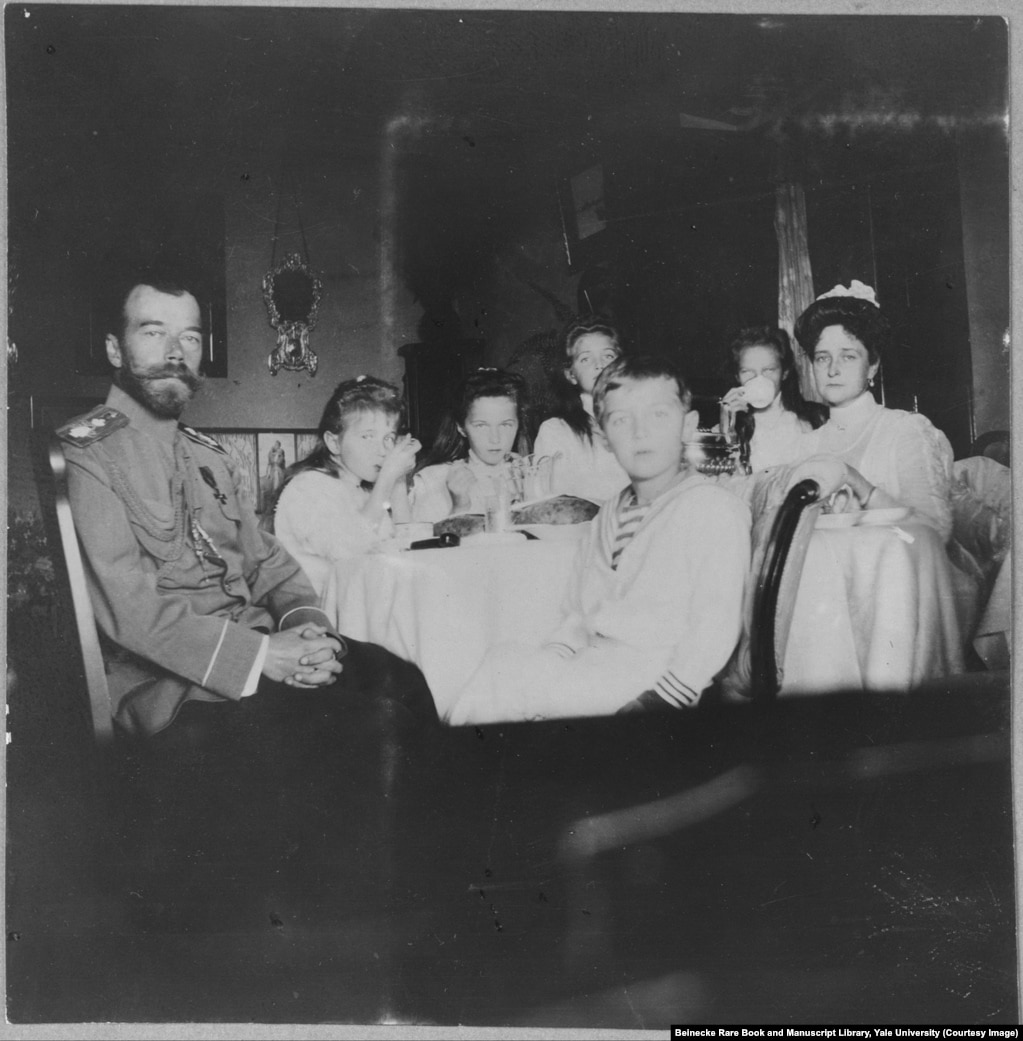
1Nicholas II and his wife, Empress Aleksandra (far right), with their four daughters and son. The tsar was forced to abdicate in 1917 and he and his family were shot and stabbed to death by Bolshevik troops, in 1918, before their bodies were doused in acid and dumped into a mine shaft.
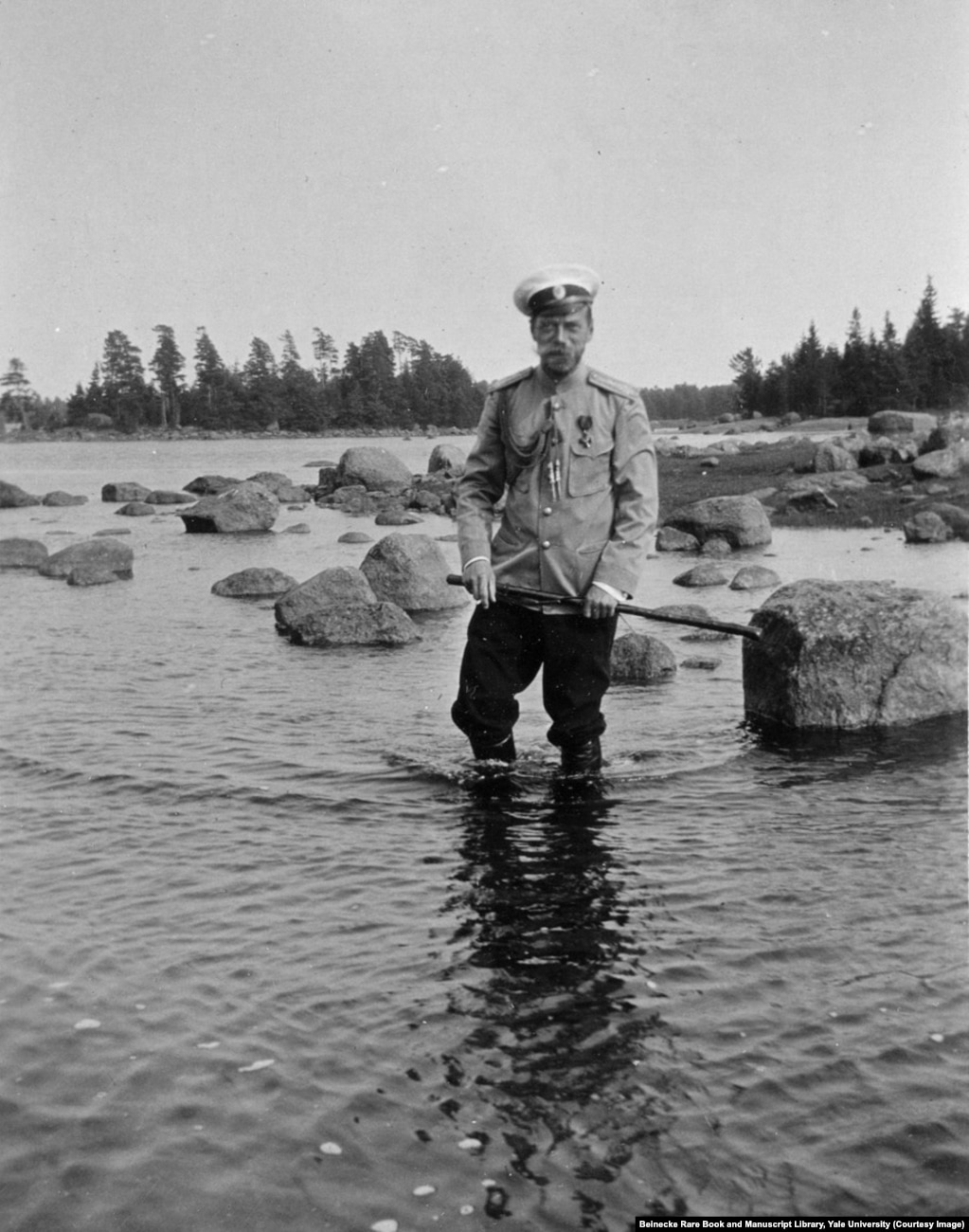
2Tsar Nicholas II wading on the rocky shore of Finland. After the early death of his father, he confided to a friend, "I am not yet ready to be tsar. I know nothing of the business of ruling."

3Tsar Nicholas II and his son, Aleksei, near St. Petersburg. The young heir suffered from hemophilia, a genetic disorder that prevents blood from clotting.
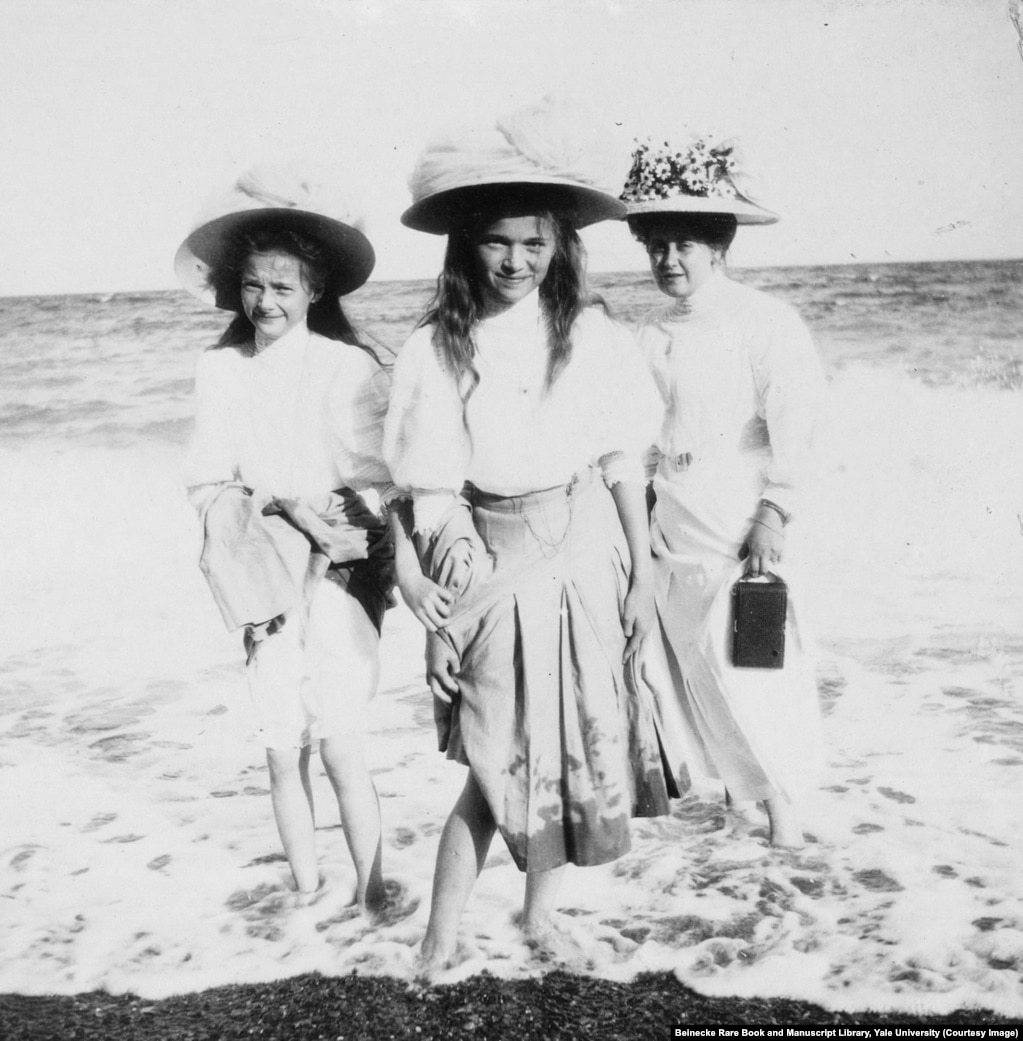
4Anna Vyrubova (right) wading at the beach with Grand Duchesses Tatyana and Olga. After the family was murdered, Anna, a close friend of the royal family, was able to flee Soviet Russia with six albums containing these photographs.
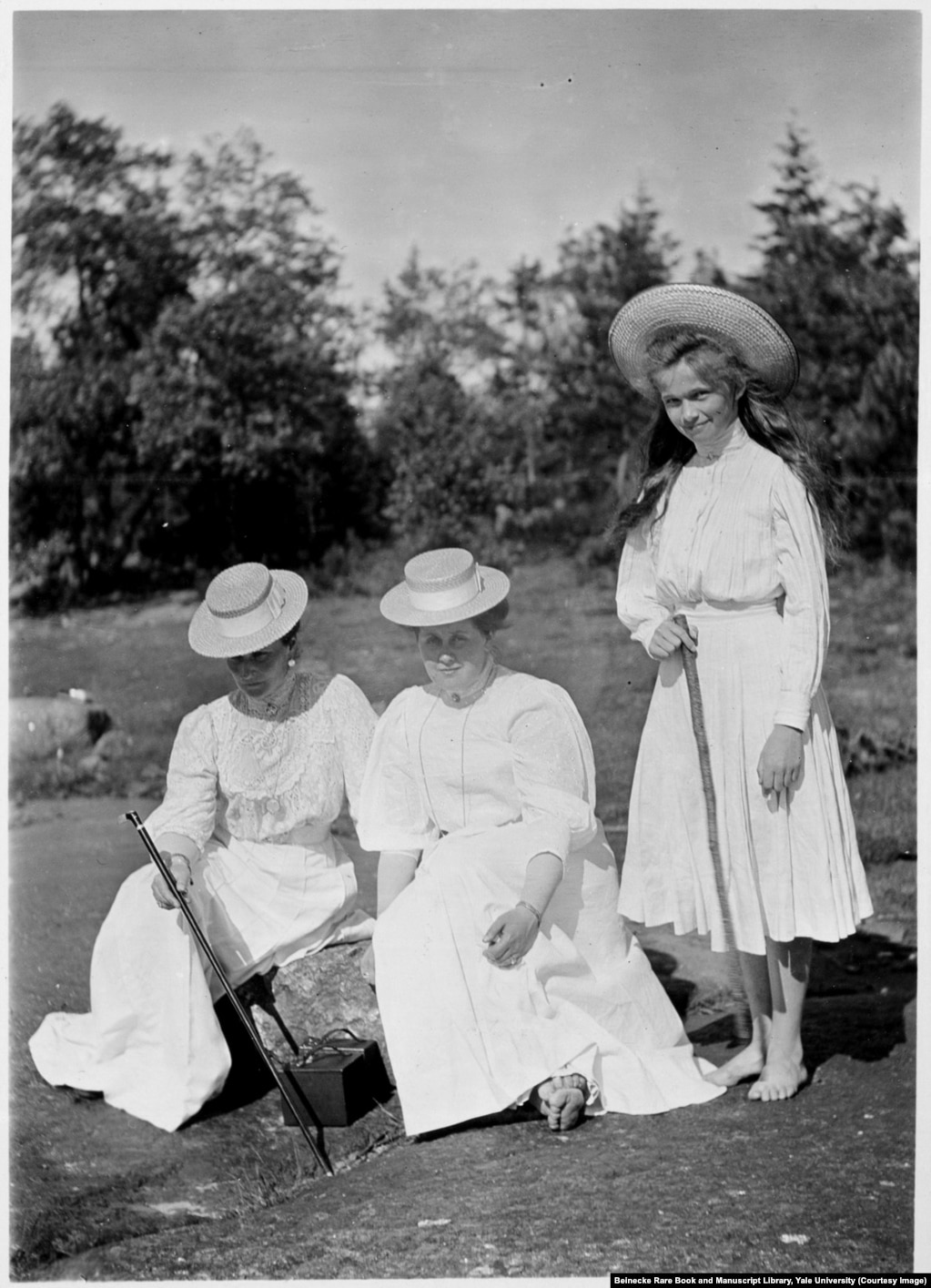
5Empress Aleksandra (left) with Anna Vyrubova, and Olga, the eldest of the grand duchesses. Anna was arrested after the revolution but managed to escape to Finland with the albums, which contain more than 2,600 photographs of the private lives of the Romanovs. She died in Helsinki in 1964.
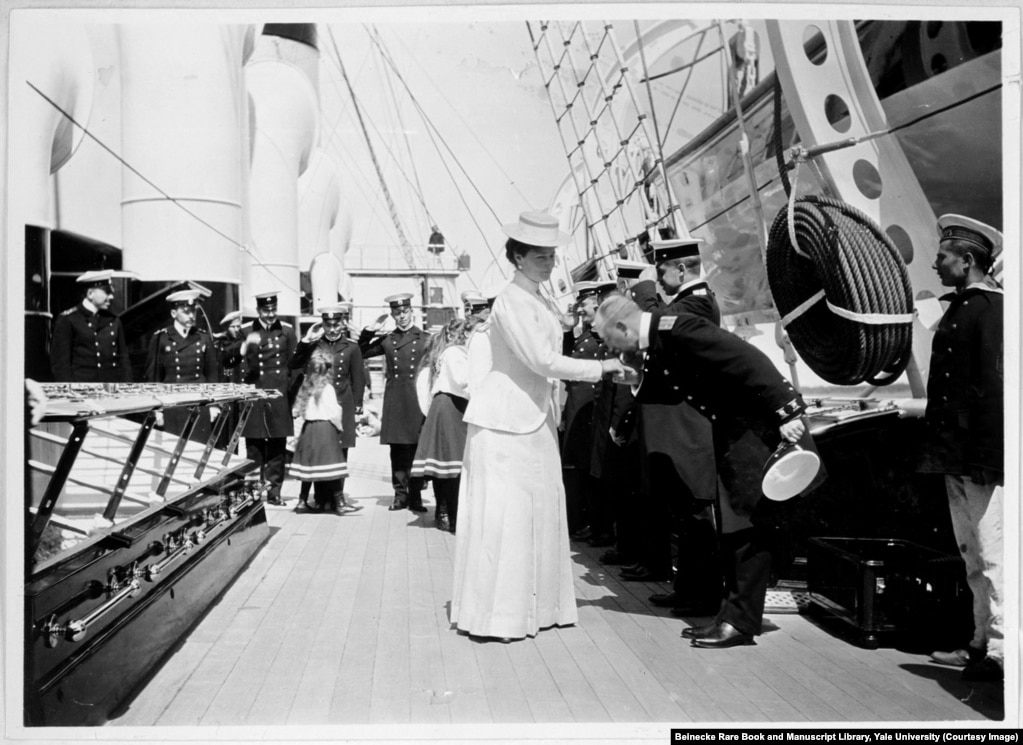
6Empress Aleksandra being greeted aboard the Standart, the imperial yacht that served the tsar's family for holidays and official tours. In the background, her young daughters, known as Russia's grand duchesses, are saluted by the crew.
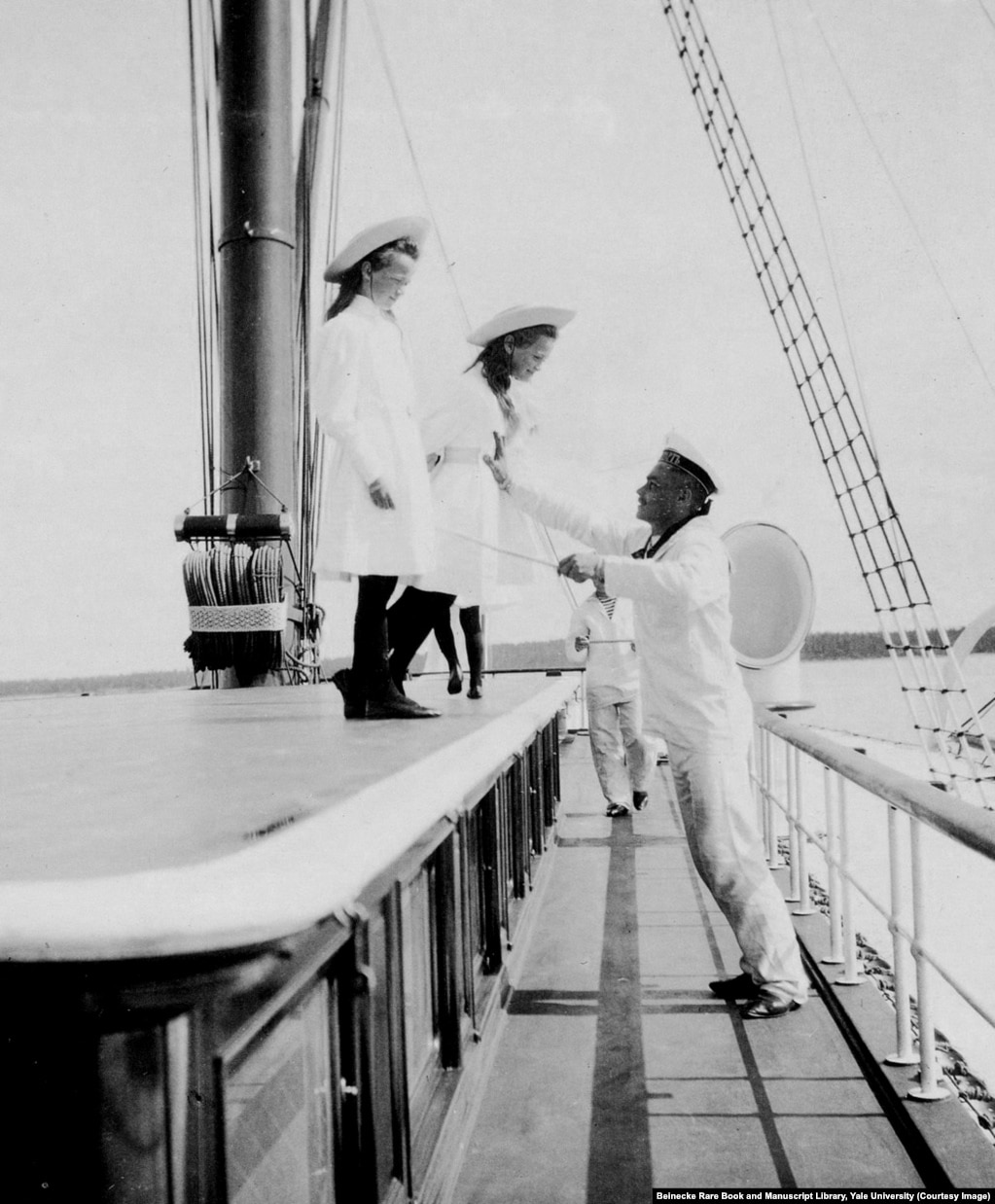
7Two of the grand duchesses aboard the Standart. When the children were small, each was assigned a sailor to ensure they didn't fall overboard.
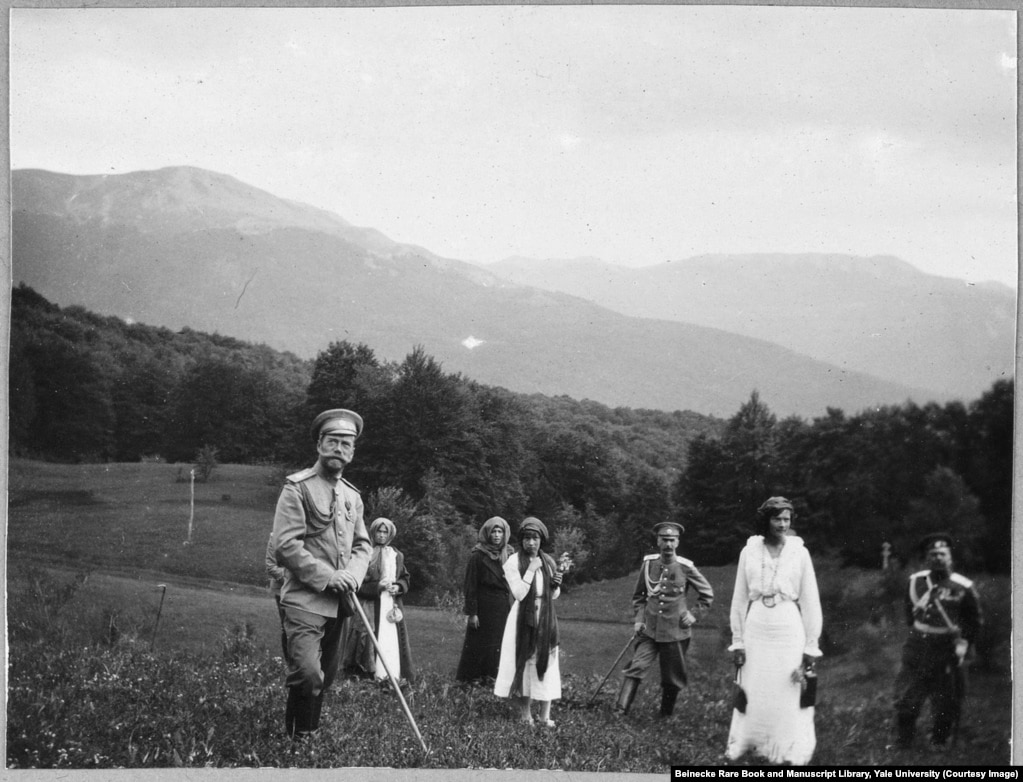
8Nicholas II and his daughters hiking in Crimea

9A footbridge at Spala in Poland. During the royal family's 1912 trip here, Tsarevich Aleksei fell while jumping into a rowboat and badly bruised his thigh, triggering internal bleeding that brought the heir apparent to the brink of death.
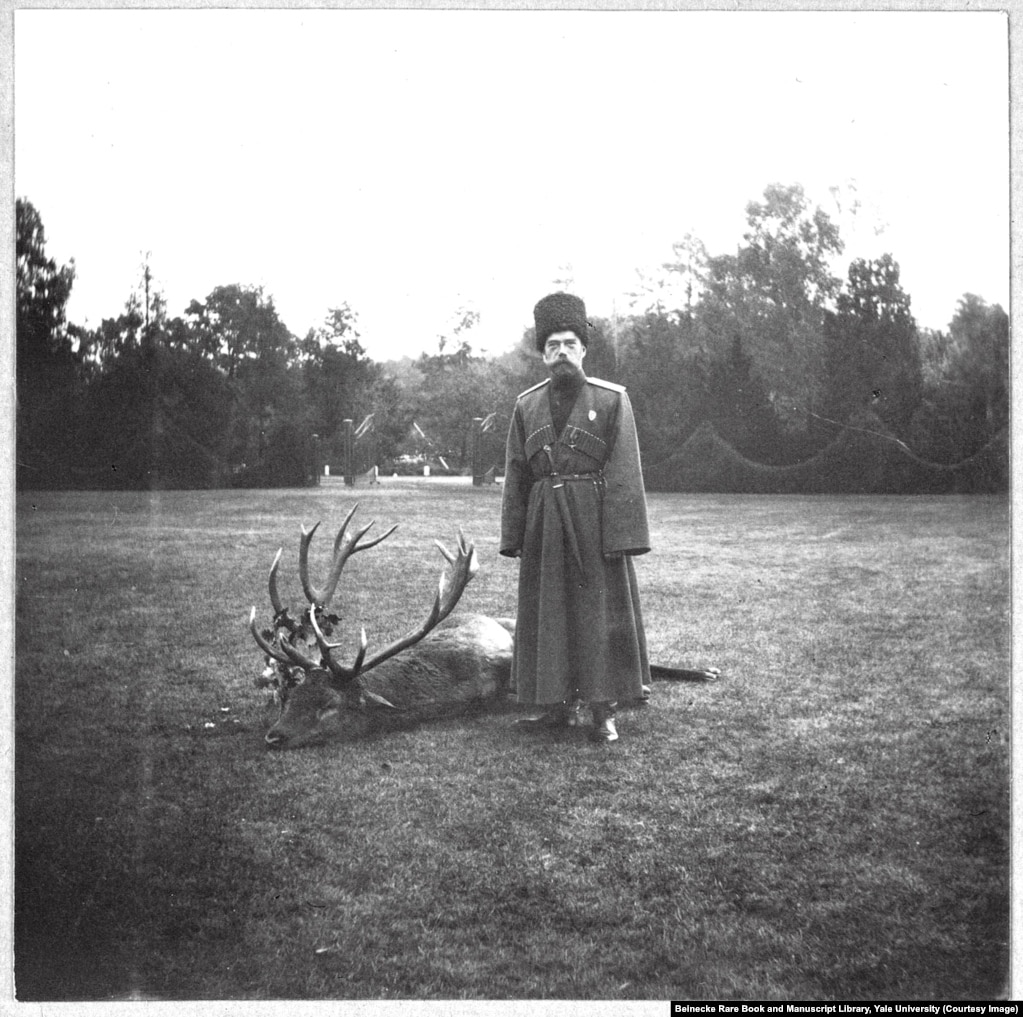
10Tsar Nicholas II posing with a deer felled at Spala shortly before the crisis with his son began. When the Siberian mystic Rasputin apparently helped the tsarevich make a miraculous recovery from his internal bleeding, Rasputin became a close confidant of the royal family.
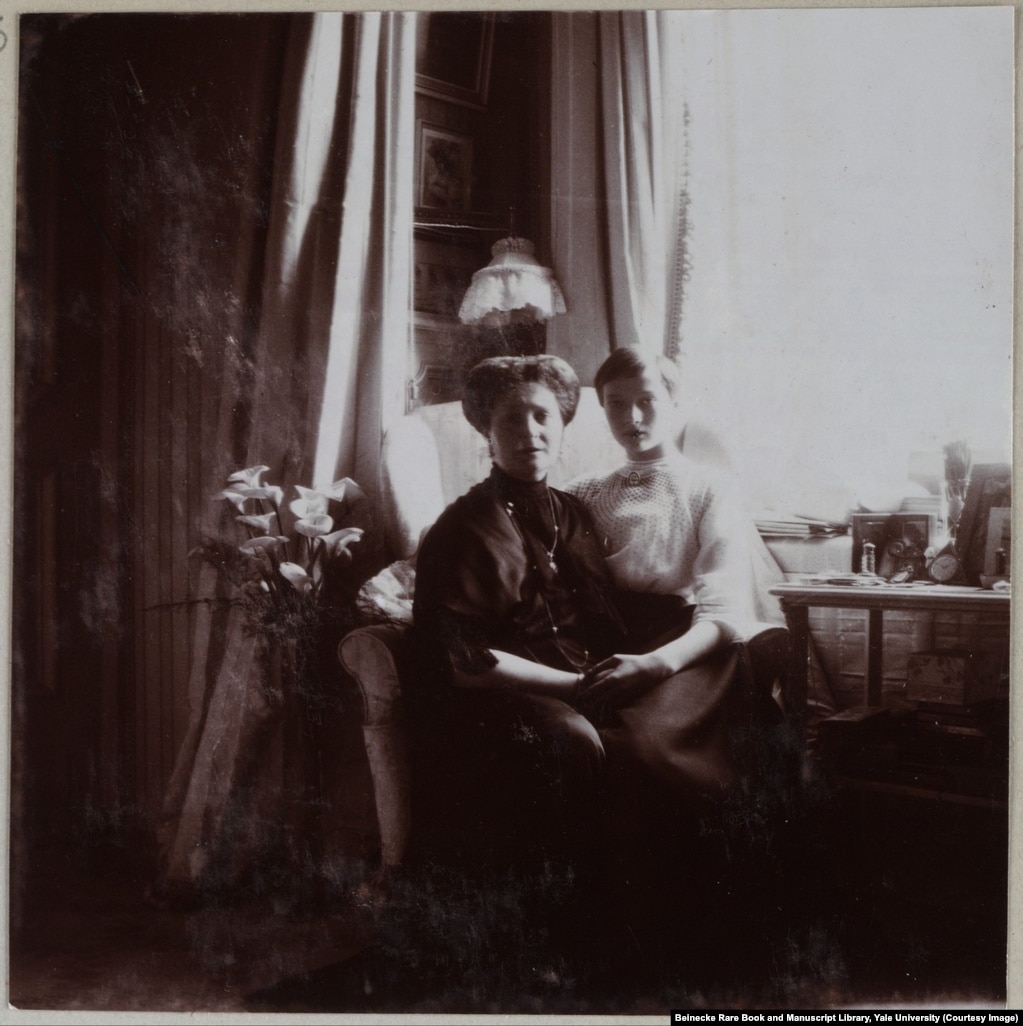
11Empress Aleksandra and her daughter, Grand Duchess Tatyana. The two were said to be especially close.
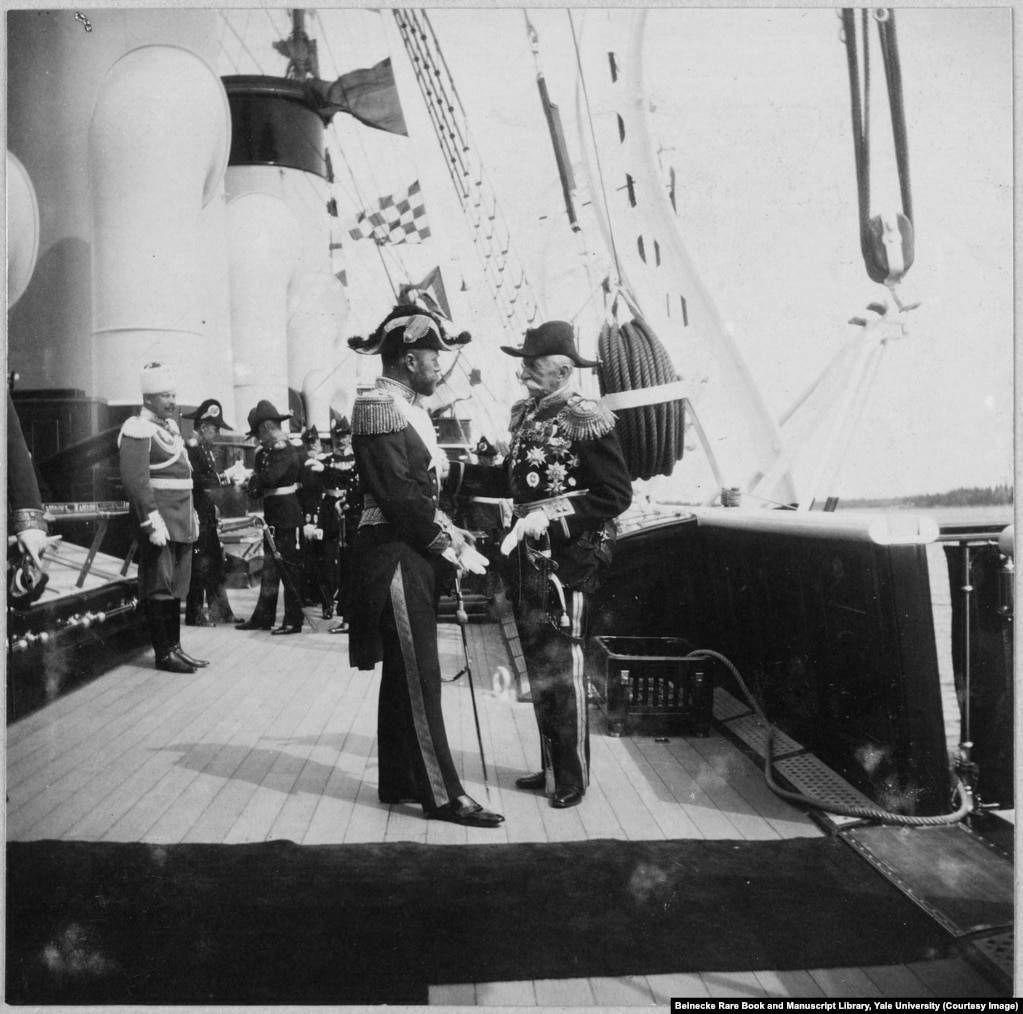
12Tsar Nicholas II (left) greeting an unidentified man aboard the Standart. (A previous version of this caption incorrectly identified the man on the right as King Gustav of Sweden.)
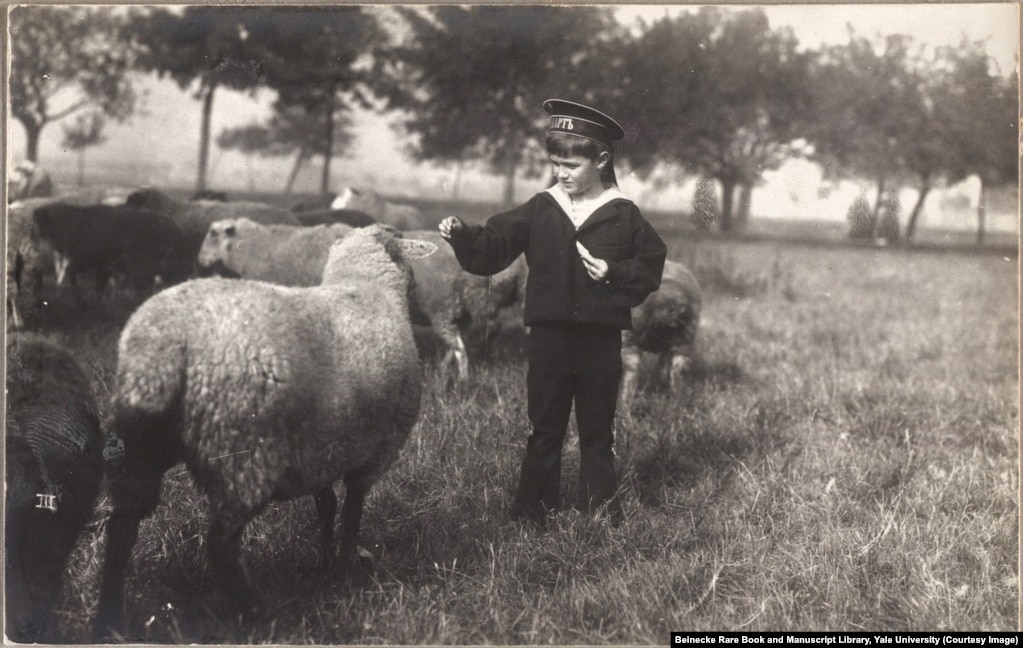
13Tsarevich Aleksei Romanov, the heir to the Russian throne. The boy was 13 years old when he and his family were assassinated.
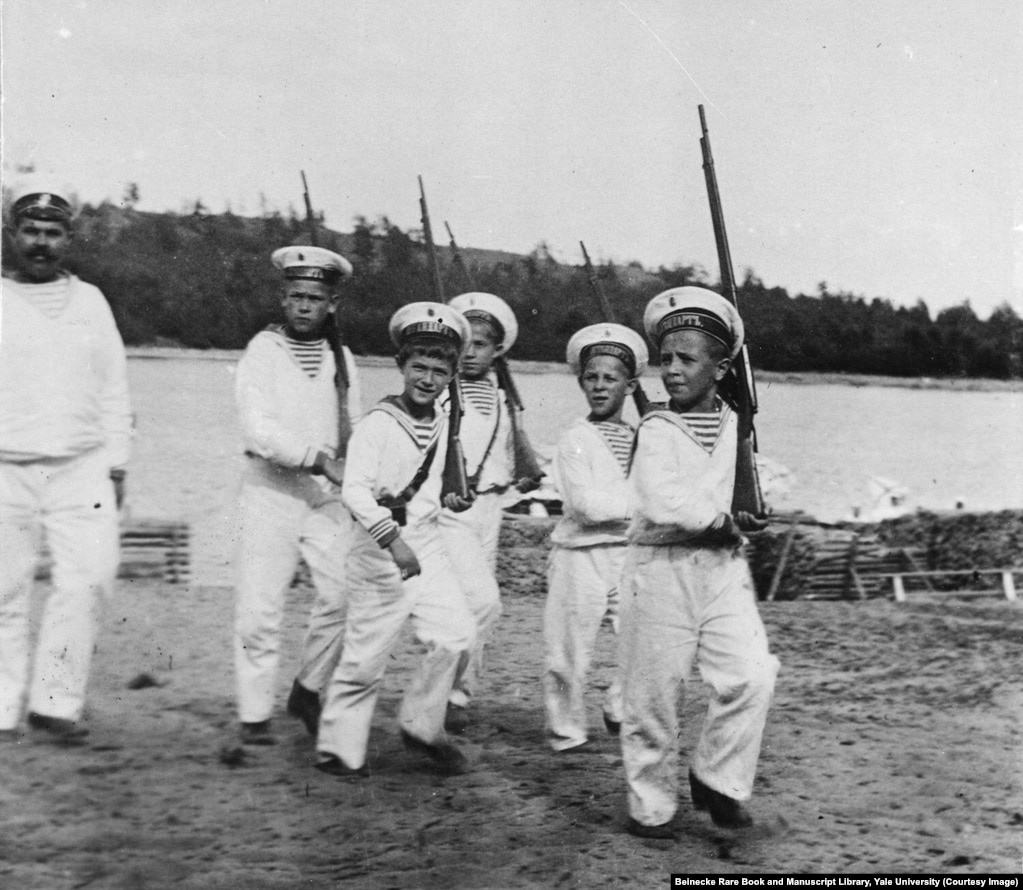
14Tsarevich Aleksei, third from left, playing soldiers. Andrey Derevenko (far left) was one of two minders tasked with looking after the vulnerable heir apparent. Derevenko joined the Bolsheviks soon after the revolution and taunted the tsarevich before disappearing into obscurity.
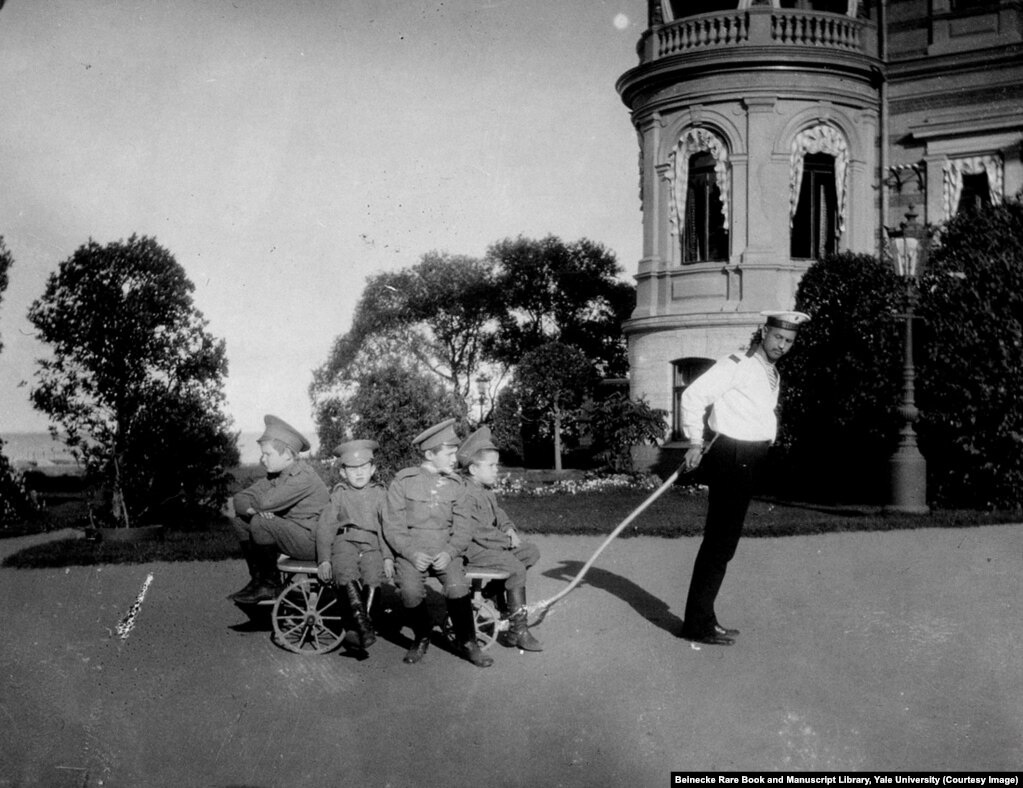
15Klementy Nagorny (right) was also tasked with looking after Tsarevich Aleksei (second from right on trolley). After the 1917 revolution, Nagorny joined the royal family in captivity despite knowing it was likely he would be killed. While imprisoned with the Romanovs, he intervened to stop a Bolshevik guard from stealing Aleksei's gold chain; he was shot a few days later.
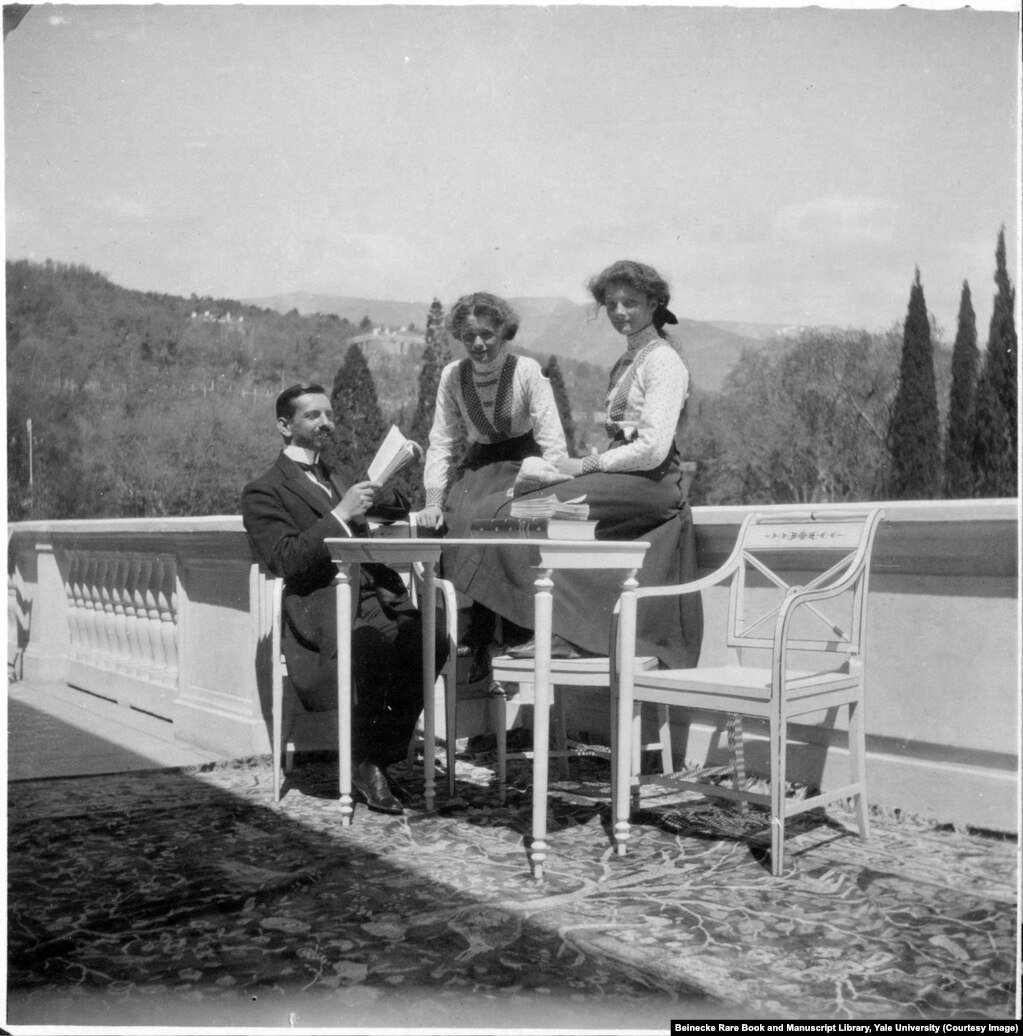
16Pierre Gilliard, the family's French tutor, with his pupils Olga and Tatyana Romanov. Gilliard was another of the family's retinue who joined them in captivity. After the murders, he assisted the investigation into the killings before fleeing Russia as Vladimir Lenin tightened his grip on power. He died in Switzerland in 1962.
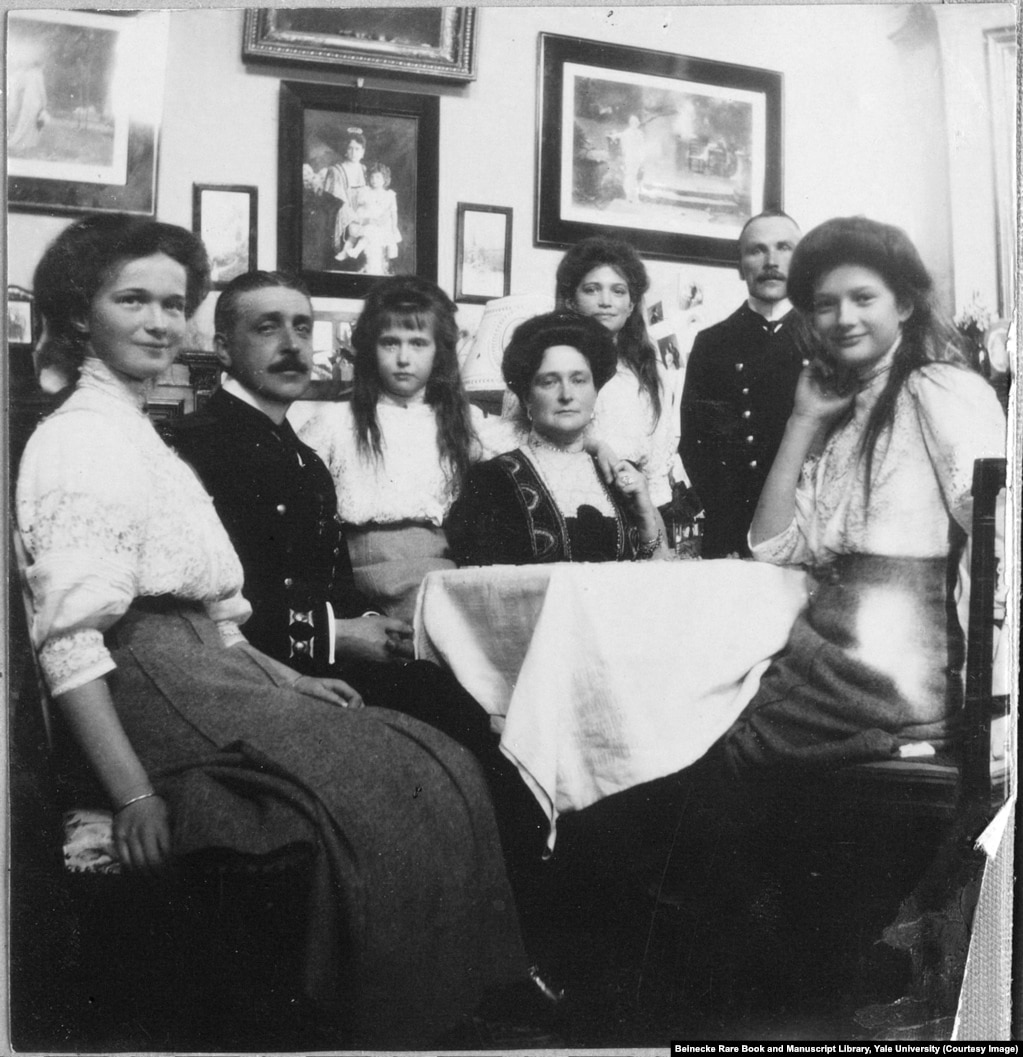
17The grand duchesses with their mother and two officers

18Aboard the Standart, sailors take turns bouncing their shipmates down the deck on mats.

19Tatyana Romanov aboard the Standart. Tatyana was described by an associate as a "poetical creature, always yearning for the ideal, and dreaming of great friendships which might be hers."

20Grand Duchesses Olga, Tatyana, and Maria aboard the Standart in 1914. The sisters were 22, 21, and 19 years old when they were killed.
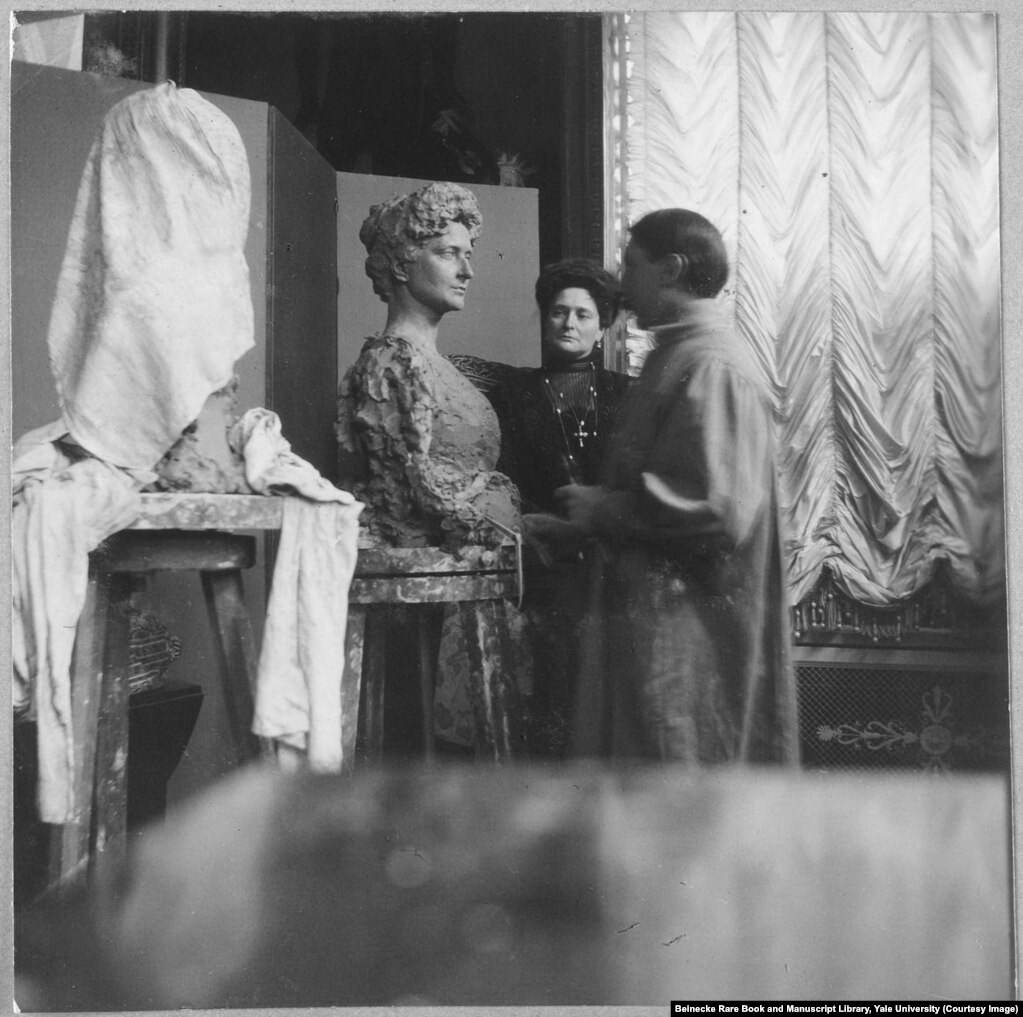
21Empress Aleksandra having her likeness modeled in clay. In the three years before the revolution of 1917, the German-born Empress became a figure of suspicion and contempt as Russia fought against Germany on the ruinous battlefields of WWI.
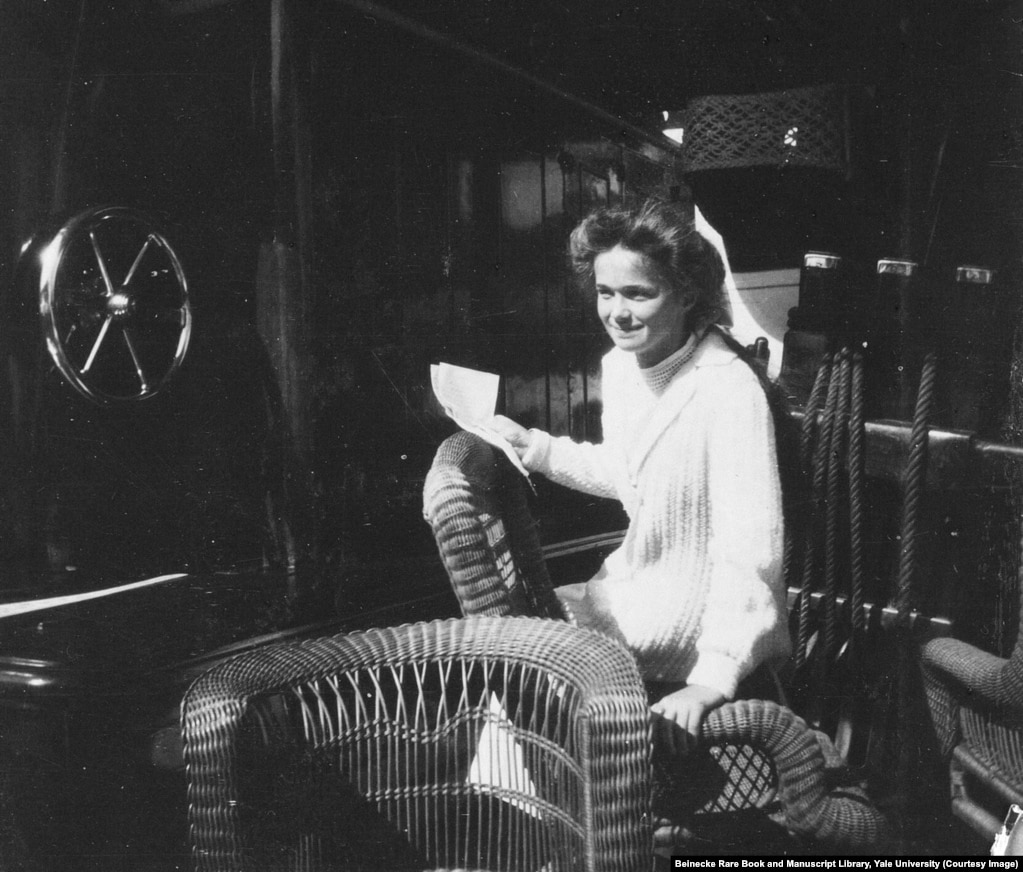
22Olga Romanov in a wicker chair aboard the Standart
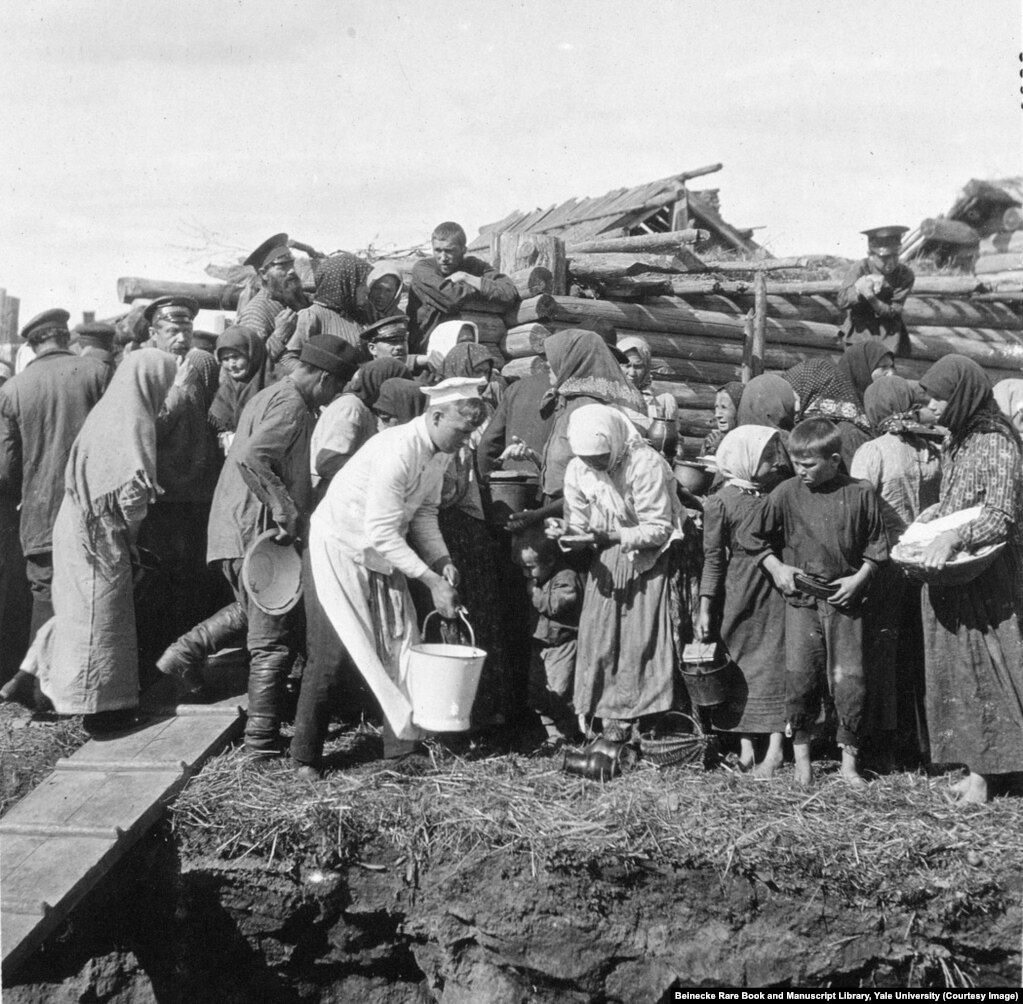
23Villagers photographed during a trip made by the tsar and his family. The picture is one of only a few in the albums which focus on the ordinary people of Russia.
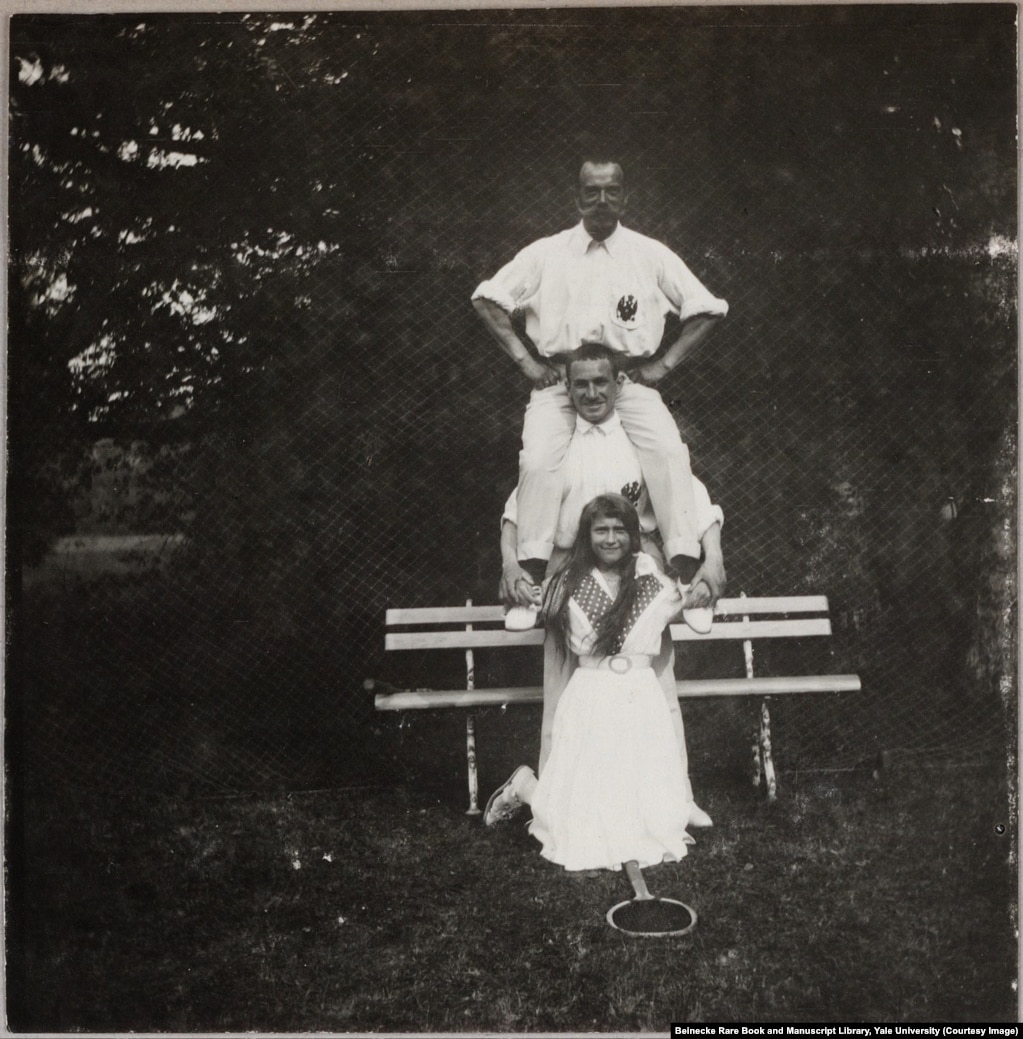
24Anastasia, the youngest of the Grand Duchesses, photographed after a round of tennis with an officer and her father, Nicholas II. On the night of the murders, on July 17, 1918, Anastasia fainted in the initial hail of bullets. She awoke moments later and screamed before the Bolshevik troops piled onto her with bayonets.
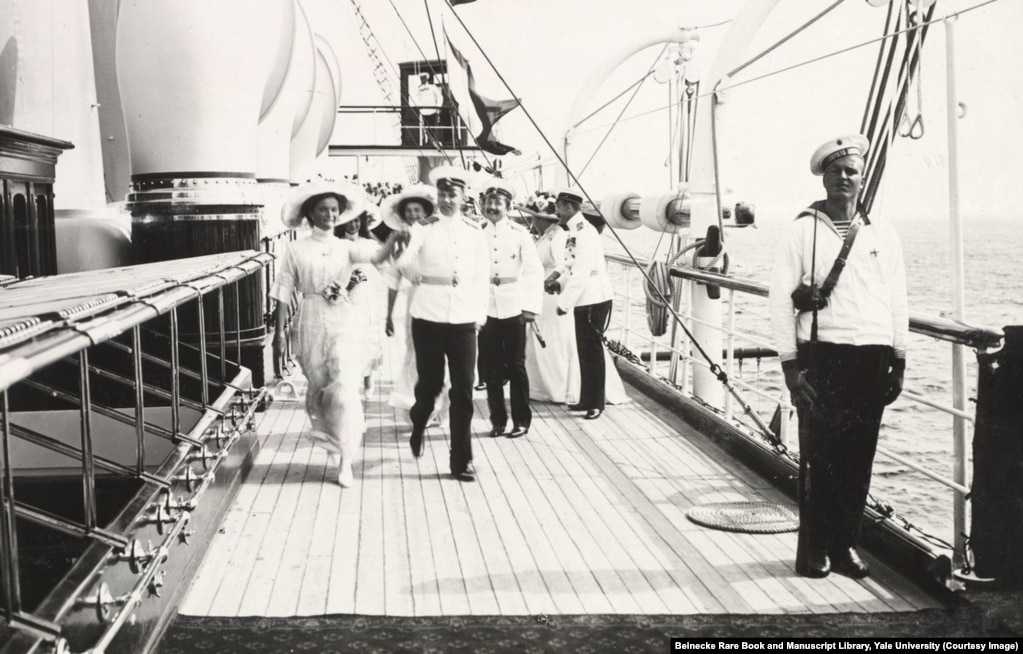
25The grand duchesses striding across the deck of the Standart. Life on board the yacht was relaxed and informal, and flirtations sprang up between the sailors and the grand duchesses.













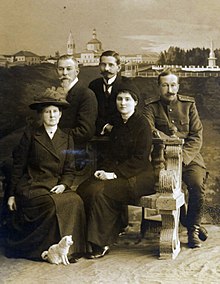
















Really very impressive post & glad to read this. Good luck & keep writing such awesome content.
VastaaPoistaWeb Development Company
Software development company
Buy Sakhi Bridal Jewellery Sets gold jewellery set from buymyJewel more than 100 designs with authentic jewellery certificate
VastaaPoistagreat to see this
VastaaPoistagood post
VastaaPoistakeyword
You made some nice points there. I looked on the internet for the subject matter and found most individuals will agree with your site. Can you review my blogs and give some tips regarding them.
VastaaPoistaCheckout Punjabi Salwar Suit Captions for Instagram
VastaaPoistaCheckout Ramadan Mubarak Wishes Messages For Friends
VastaaPoistaWhat were the key findings of Edvard Radzinsky's 1990 investigation into the murders, particularly regarding Lenin's bodyguard, Alexei Akimov, and the revelation that he personally delivered Lenin's execution order to the telegraph office, which was also signed by Yakov Sverdlov?
VastaaPoistaTelkom University